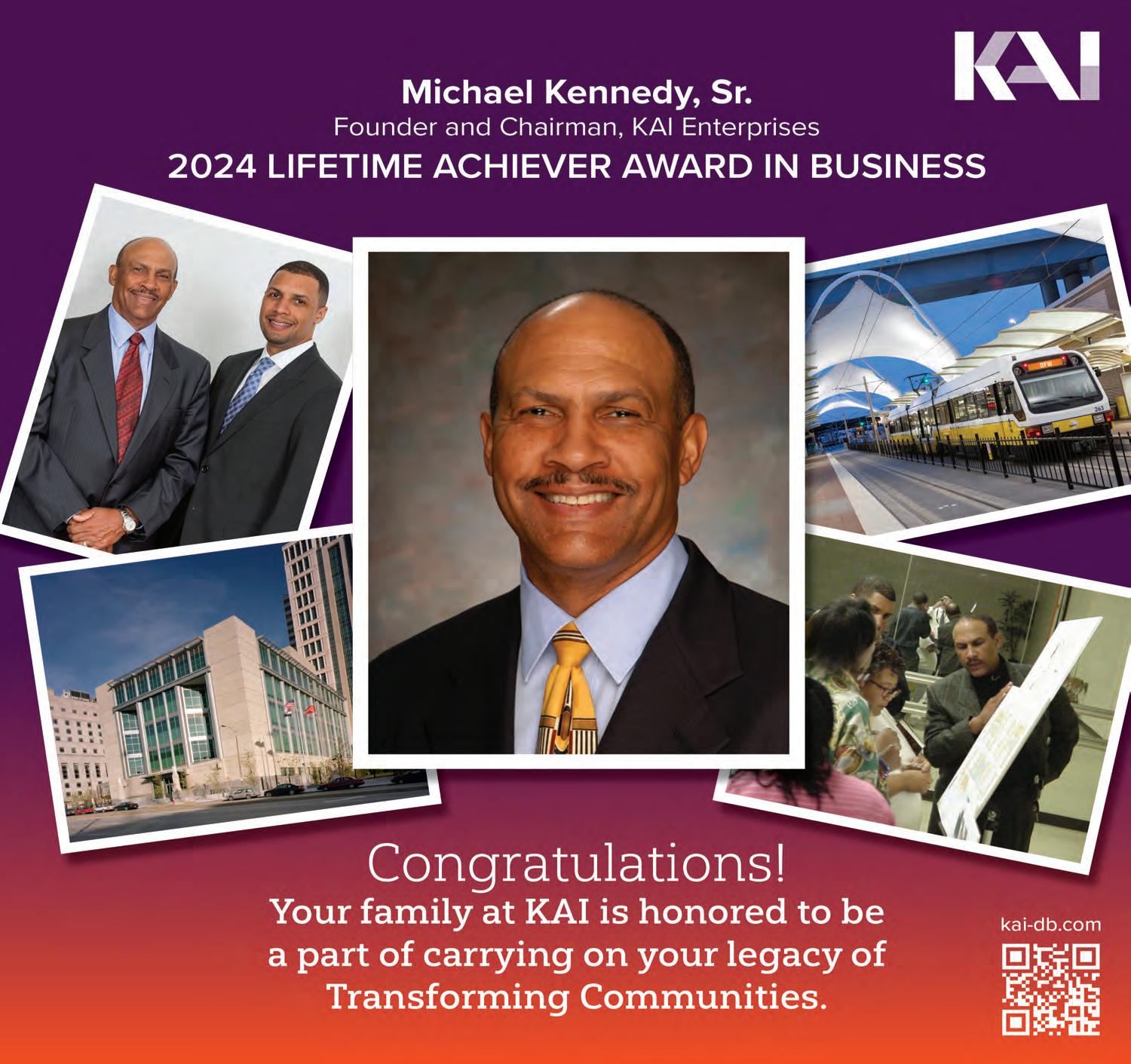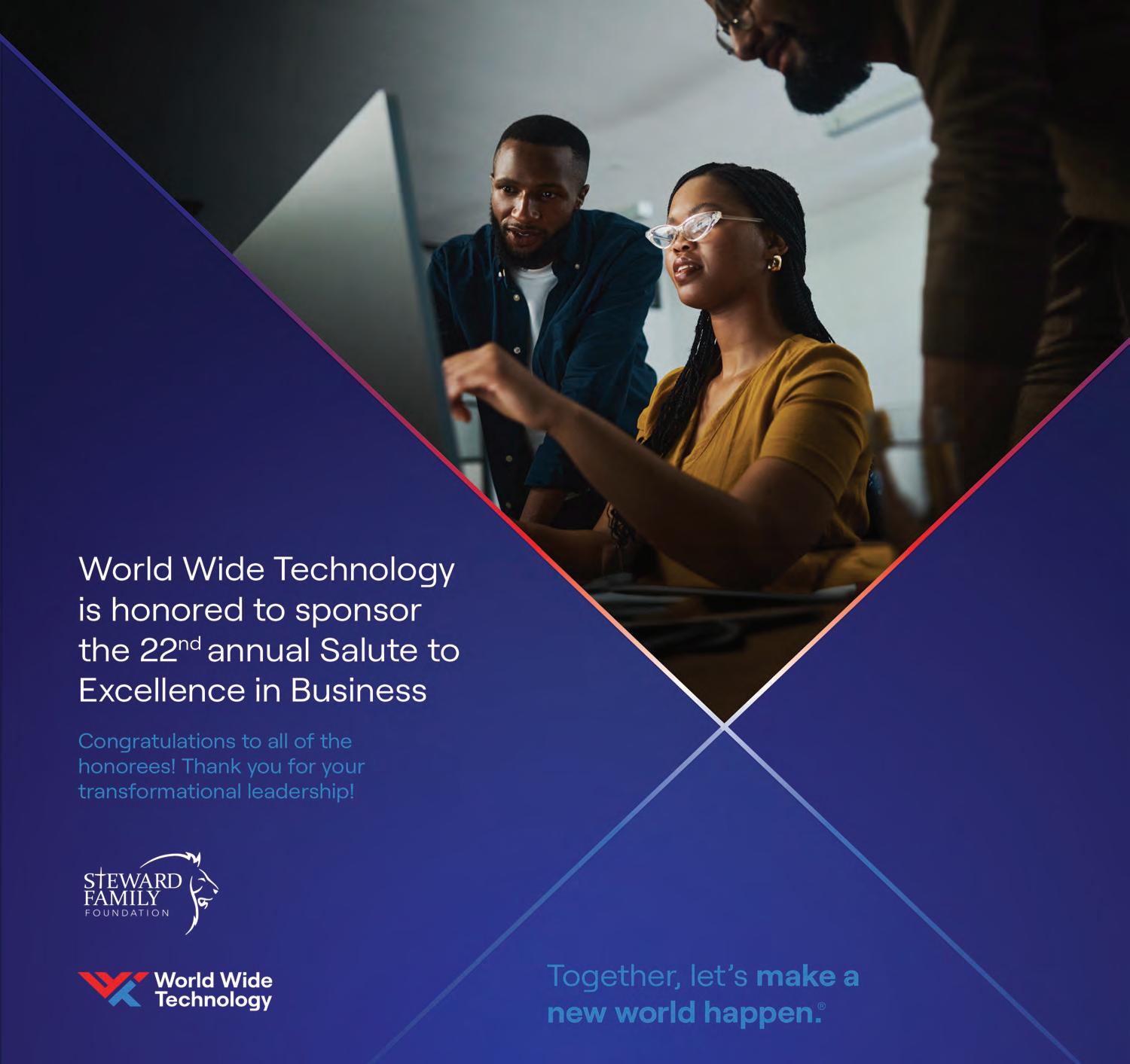






By Ashley Winters
St. Louis American
Legendary actor and visual artist Billy Dee Williams shared his varied talents, wisdom, wit and hypnotizing smooth voice with a jam-packed audience at the Skip Viragh Center for the Arts at Chaminade on Tuesday, February 20, 2024. Williams in conversation with KSDK TV News anchor Rene Knott discussed Williams’ latest book, ‘What Have We Here?: Portraits of a Life’
“We are here tonight because we are so honored to have an illustrious guest, a Hollywood legend,” said Gwen G. Mizell, Ameren senior vice president and chief sustainability, diversity & philanthropy officer. Mizell informs the audi-
See WILLIAMS, A7
St. Louis SC Josh Yaro (R) heads the ball in front of Houston Dyamo’s Lbrahim Aliyu during the first half of their CONCACAF Champions Cup match at City Park in St. Louis on February 20, 2024. St. Louis SC went on to win 2-1.
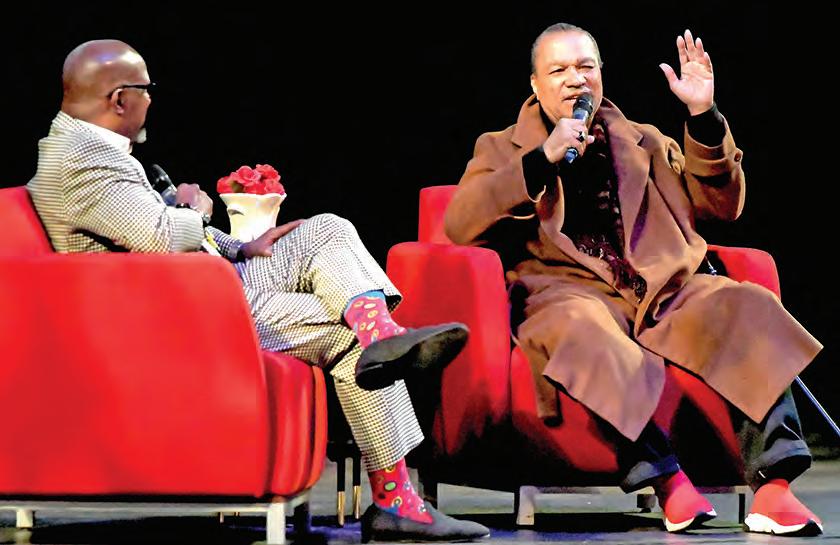

By Alvin A. Reid St. Louis American
Shield Missouri, which has given the Urban league a $150,000 grant that it will use to strengthen its community health and wellness programs. The donation will support both the Community Mobile Health Clinic and the Opioid Triage Team.
“Anthem continues to be a strong partner for the Urban League as we address the significant health dispari-
ties that exist in our community” said Michael P. McMillan, Urban League president and CEO.
“This grant will allow us to provide important health screenings and other critical wellness services where access is limited and better address those impacted by opioid abuse.”

By Jared Boyd
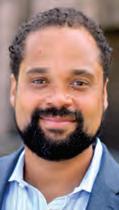
Most Black St. Louisians have a family reunion shirt in their wardrobe. These shirts recognize not only familial branches, but Black St. Louisians’ connection to places that make up the former Confederacy. My family reunion shirts recognize places like Mobile, Alabama; Columbia, South Carolina; and Arlington, Virginia. Like family reunion shirts, St. Louis police department operations have roots in the former Confederacy. Missouri took over control of St. Louis’s police department during the Civil War because the state’s governor, Claiborne Jackson, feared the city would use its arsenal to help the Union. After 151 years of state control, advocates of local control got a statewide measure on the November ballot in 2012 allowing for local control with a broad understanding that residents and their police force should be directly connected. Missourians across the state overwhelmingly supported the ballot measure providing St. Louis residents with local control
See REPUBLICANS, A6
By Alvin A. Reid
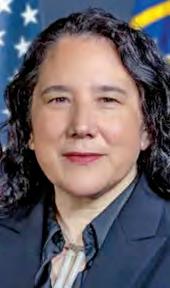
U.S. Small Business Administration. The number of women-owned businesses has grown dramatically. From 2019 to 2023, the growth rate of women-owned businesses was 94% greater than the growth of menowned businesses.
Census Bureau data projects that a record-breaking 5.5 million new business applications were filed in 2023, making it the strongest year of new business applications on record. It is also the third See BUSINESS, A7

As Usher becomes the most-watched halftime show, Chris Brown tension persists
“No, I did not reach out to Chris Brown,” Usher Raymond said.
His halftime performance broke the audience record with an average of 129.3 million views, per Front Office Sports.
Usher sang 11 hits and brought out icons Alicia Keys, Lil Jon, Ludacris, will.i.am, Jermaine Dupri and H.E.R.
When asked if he buried the hatchet and perhaps reached out to the problematic Chris Brown.
a bloody nose after a dispute where Chris allegedly insulted Teyana Taylor. Usher’s son, Usher V. insinuated the incident might be true.

Kanye West co-signs twice impeached former President Donald Trump’s shoe campaign

“It’s all good, man,” Usher said. “It’s always going to be things that you’re going to hear. Ain’t no issues between me and that man, we good.”
Chris Brown and his entourage allegedly attacked Usher, giving him
The always predictable Donald Trump announced his new scheme of selling sneakers while on his campaign trail. Always making history, this marked the first time a former president unveiled a line of ‘Never Surrender’ shoes.
“This made me smile,”
Kanye West said in a post of Trump walking on stage to celebrate his new sneaker business while campaigning for president.
“Kanye consistently shows us that he doesn’t f**k with us… unless he needs some sympathy, you guys continue to buy his music and make his
mid-albums go No. 1… It’s embarrassing at this point,” one commenter said in reaction to West’s comment. Online reactions to the shoes have been mixed, with some reviewers calling them “fire,” while more level-headed voices compared them to the 2009’ swag era.
Peanuts character
‘Franklin’ finally gets his due
CNN is reporting that a new animated special will spotlight Franklin Armstrong, the first Black ‘Peanuts’ comic strip character, more than 50 years after his debut.
The Apple TV+ spe cial “Snoopy Presents: Welcome Home, Franklin” explores the character’s origin as a young boy from
a military family who likes baseball, space and listening to Stevie Wonder All were possible when the comic’s creator Charles Schulz first featured Franklin in 1968.
“A Franklin special is really overdue,” Craig Schulz, who co-wrote the special and is the son of Charles Schulz, told NPR. “We get to go back and really find out where Franklin came from and really tell the whole story of this kid.” Los Angeles school teacher Harriet Glickman wrote to Charles Schulz explaining the importance of integrating his comic. According to correspondence shared by the Schulz museum, Glickman believed Peanuts comics could help shape attitudes about race in America after the death Martin Luther King Jr.

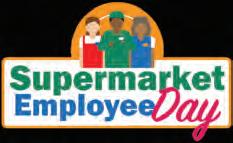










































“The
- U.S. Rep. Shontel Brown (D-Ohio) on

‘Routinely ignored’ by GOP
By Rudi Keller Missouri Independent
Alvin A. Reid
St. Louis American
Members of the Missouri
House Democratic Caucus have filed identical resolutions that would empower voters to give themselves greater local control on firearms laws.
The move comes in the wake of the Kansas City Chiefs Super Bowl parade shootings that left a woman dead and 22 people –many of them children – wounded.
Missouri prosecutors said Tuesday that two adults have been charged with murder, after they were apparently shooting at one another.
Lyndell Mays, of Raytown, Missouri, and Dominic Miller, of Kansas City, Missouri, are both charged with second-degree murder, two counts of armed criminal action and unlawful use of a weapon. They both remain hospitalized.
St. Louis and Kansas City remain in an ongoing struggle with the GOP-dominated state legislature to determine their own gun laws. The resolutions filed this week would amend the constitution to give munici
city ordinances could not regulate firearms beyond the bounds of state law.
Following the violence in Kansas City, St. Louis Mayor Tishaura Jones said in a statement, “What was meant to be a celebration for Kansas City has instead become an all-too-familiar tragedy. My thoughts are with our fellow Missourians and all of those whose lives continue to be affected by gun violence.”
House Minority Leader Crystal Quade, D-Springfield, and Missouri gubernatorial candidate, said this legislation would give Missourians the power to act where Republican majorities had failed to do so.
“Republican state legislators have shown no intention of passing even the most common-sense gun safety measures in the 20-plus years they have held the majority,” Quade said.
“As with so many issues where they have failed to show leadership, it falls to the people to make things right. Voters should have the ultimate say in giving their local leaders the power to protect their citizens when the state lawmakers in control refuse to act.”
Missouri Democrats have advocated for legislation like this

A memorial sits outside Union Station days after a Johnson County mother was
a shooting at the Kansas City Chiefs Super Bowl LVIII victory parade. Twenty-two others, including several children, were wounded.
violence.
The statement drew the ire of state Rep. Ashley Bland Manlove, a member of the Missouri Legislative Black Caucus who represents part of Kansas City.
“Some people are going to say
who also represents portions of Kansas City including downtown said “to experience this day of horror as it happened in my own district only reaffirms my belief thatMissouri needs common sense gun safety laws more than
deaths, and Missouri ranked as high as fourth in gun deaths in the nation in 2020. Weber said solutions to the gun violence problem are “routinely ignored.”
“I would hope that you all

Black America needs to be perfectly clear about what a second term for Donald J. Trump and Republican control of the U.S. Senate & House of Representatives would mean for them and their families.
At the end of January, New York Times columnist Charles Blow warned us in a column entitled “The Dawn of A New Era of Oppression” that periods of backlash take shape after surges of Black progress, adding that “we have entered another such period.”
Despite the political misinformation and many outright lies spewed by Republican officials and their media sycophants, there is no doubt about Mr. Trump’s lasting damage to the country and Black Americans, in particular during his four years in the presidency. Moreover, whatever restraints he faced in his first time in office will no longer exist if he returns as he has surrounded himself with ideological allies who will carry out his intention to implement his vile MAGA agenda.
That will create a serious threat to the well-being of Black Americans.
The list of policies that gained support during Trump’s recent tenure and are still being enacted at the local levels in red states is lengthy, consequential, and alarming. Recall how, in 2016, President Obama nominated Merrick Garland to the Supreme Court. In 2018, U.S. Senate Majority Leader Mitch McConnell, a Republican from Kentucky, called blocking Garland’s nomination his most “consequential” decision.
This maneuver allowed Trump to put three justices on the court to create a conservative super majority that has already left a trail of destruction of reproductive and LGBTQ rights, affirmative action, and environmental protections.
And if you don’t think it could be a worse court, look at Sen. Ted Cruz of Texas or Utah’s Sen. Mike Lee, a key player in Trump’s scheme to overturn his 2020 loss, or John Bush, a Trump-appointed judge, who compared abortion to slavery.
These are examples of the potential for more damaging policies with Trump’s return to the White House. Republican control of the three federal branches would enable Republican-controlled majorities at the state level to undo some of the historic gains and achieved outcomes following the civil rights movement of the 1960s.
Outcomes of the election of 2024 could accelerate the backlash we already see with the overturn of the constitutional right to abortion, the uprooting of affirmative action and school district and state
resistance to the teaching of Black history, as well as a national crusade against DEI (diversity, equity, and inclusion).
A serious erosion of Black voter support, a crucial constituency for the Democratic Party at the national, state, and local levels, would be disastrous.
The core of the Democratic Party lies with Black, Latino, younger voters, and some women. That means that the Democratic party must improve their standing with these voting blocs. This is particularly true in the battleground states of Arizona, Georgia, Michigan, Nevada, Pennsylvania, and Wisconsin.
The Democratic Party must do a better job of creating a targeted Black narrative that explains what they have done for the Black community, especially to skeptical younger Black men. It must explicitly spell out the grave threats posed by Trump-led Republican majorities in the House and Senate as well as the White House.
Our community needs to understand that our struggle for freedom and dignity in the face of the challenges we face is ongoing. We must be smart and strategic as we ponder what is prudent and forward-thinking given the political reality in this era. It is necessary that we understand that there is no realistic alternative that outweighs the Biden/Harris ticket to stop Trump.
The ominous threat is that there will be a diminished turnout of Black voters, which would be catastrophic. Hopefully, Democratic Party leaders will understand the need to build a major campaign to power people to go to the polls in great numbers. The campaign should remind them why voting for Trump is out of the question.
Don’t forget Trump called for Black Lives Matter protesters to be shot in 2020 after George Floyd’s murder. Don’t forget Trump had Steven Miller as a White House advisor — who, as NBC News reported in 2019, had previously sent emails “cited and promoted white nationalist ideologies of white genocide, immigrants as criminals and eugenics,” and the extremist right-wing machinery that is now so firmly entrenched in the Republican party.
We must remember it is more than voting for someone who does something for you; it is voting to stop a candidate (Trump and his crowd) from doing something to harm you and your people. We must not forget how truly dangerous a second term for Donald J. Trump would be.
Commentary
By Ben Jealous
It matters deeply that America has a woman as our vice president. That has never been truer than at this moment.
Nothing makes this more clear than Vice President Kamala Harris’s courageous decision to champion reproductive freedom in the midst of a full-on assault on the right to choose.
Right now, Vice President Harris is traveling the country on an extensive Reproductive Freedom Tour.
As noted by the New York Times, “The vice president has been the administration’s most forceful voice for abortion rights in the year and a half since Roe v. Wade fell.”
gal, the procedure was risky. Abortions, forced to be conducted in secret, frequently resulted in death or injuries that would leave women unable to bear children.
Adding to the risk back then was that many of the people who performed these abortions were terrible doctors … or not even doctors at all.

Even among those of us without a uterus, the impact of the vice president’s courage affects many of us personally in our lives. It affects me as a girl dad, as a member of this country, and because the person who shaped me most as an organizer is my grandmother, Mamie Todd, who started her career in social change at Planned Parenthood in Baltimore. Even though abortion was illegal then, the basic mission was the same: reproductive health and freedom. And while the work mainly focused on birth control, education, and some routine healthcare, it was not without its challenges – especially in a Catholic city in a Catholic state.
In the pre-Roe v. Wade era, when abortions were illegal in most parts of this country, many still depended on them. Some required them in order to extricate themselves from abusive relationships or avoid other dire consequences. Being ille-
By Congressman Andre Carson
As Black Americans, we have much to celebrate. Our joy – which has always shone through even in dark times. Our strength – which has carried us through generations. And our history – full of leaders, visionaries, artists, entrepreneurs, and changemakers.
Fairness and equal rights are not standalone issues. They should be the bedrock of every aspect of government. From the economy to infrastructure that ensures strong public transit and safe roads, to our environment, we must always address fairness.
Here are just a few ways I’m working to shape a stronger, more equitable future: Mentoring
Mentorship is important for everyone, but especially for young Black students. While we would like to believe every young person receives the same opportunities, the statistics tell a different, unfortunate story. Black students are less likely to earn college degrees because of discrimination and other challenges. Black students are 54% less likely than white students to be recommended for giftededucation programs. And Black students experience stereotypes in media and pop culture that have harmful effects on their mental health.
side of school or family can result in dramatically different outcomes.
Reducing health gaps
Health disparities persist. Black Americans are more likely to get pancreatic cancer than any other racial or ethnic group. When caught early, outcomes for pancreatic cancer improve, but too many Black Americans aren’t diagnosed until the cancer is advanced and therefore inoperable. Black Americans continue to be disproportionately impacted by this terrible disease. Access to affordable health insurance is also essential to achieve public health goals. This year, registration for the Affordable Care Act surged, with a 30.7% increase in sign-ups nationally. That means more Americans than ever can access the care they need to live longer, healthier lives. The Affordable Care Act was President Obama’s signature legislation for a reason – healthcare is the foundation for every American’s success.

Every young person in America should have access opportunity to opportunity. Mentoring programs are key to that goal – students who are mentored are less likely to skip school or use drugs, and more likely to attend college. There are currently two youth mentoring bills aimed at supporting mentoring opportunities –the Transition to Success Mentoring Act (which helps local education agencies prepare students for the transition from middle school to high school), and the Student Helping Young Students Act, (which provides compensation for college student mentors who help younger students).
Mentoring works. It helped me through every stage of my life. It can mean the difference between graduating high school and dropping out, but the impact goes deeper than that. Black youth need to feel heard, seen, and understood. Having a trusted adult to confide in out-
Protecting Black history
Black Americans built America. We have a rightful place in history books and we deserve recognition for our accomplishments.
It’s more important than ever to spotlight Black history and Black icons. Book bans of real history, and stories discussing racism are being targeted at alarming rates. These attempts are designed to silence our voices and whitewash history. Black History is American history. This month, we learn from the challenges we’ve faced and grow stronger for the work ahead. But let’s also pause and celebrate the reasons for Black pride and joy. Congress historically took away the humanity, dignity and rights of people who look like me, yet today, I have the honor to serve in this institution, along with my Congressional Black Caucus colleagues.
Our stories matter. Our voices matter. As your representative, I will always fight to make them both heard. No matter what, our community will keep lifting each other up and succeeding and inspiring those who come behind us.
U.S. Rep Andre Carson has represented Indiana’s 7th Congressional District since 2008

EMERITUS LEADERSHIP
From 1973 until 2022, when the Supreme Court overturned Roe v. Wade in Dobbs v. Jackson Women’s Health Organization, abortions were safe and legal. Now, the Supreme Court’s decision in the Dobbs case has created a flood of laws threatening to send us back to the dark ages. This goes for women who are attempting to sever ties with dangerous men and those in other horrific situations many of us can only imagine. And it is not stopping. Just this month, the Missouri state Senate voted down two amendments to the state’s medieval abortion laws that would have allowed exceptions for rape and incest.
That’s why Vice President Harris’s leadership is so important. You cannot help but sense that she feels the urgency to help those women in her bones in a way that no man could.
Let me clear, however, about the responsibility that men have to be at this moment good allies.
It is time for all of us, regardless of our sex or gender, to stand together and push back against the callous disregard for the lives, health, and social equality of those of us for whom abortion must remain a fundamental right.
Ben Jealous is executive director of the Sierra Club and a professor of practice at the University of Pennsylvania.




MOCAN’s Cherelle Washington says there is financial assistance available for families with college students, and a first step is completing the FAFSA forms for the 2024-25 school year as soon as possible.
St. Louis American
February is Financial Aid Awareness Month, and the Missouri College and Career Attainment Network (MOCAN) is reminding students and families to complete the Free Application for Federal Student Aid (FAFSA) for the 2024-2025 school year as soon as possible.
The FAFSA form is how students and parents apply for federal aid to help pay for higher education. Each year, over 13 million students who file the FAFSA get more than $120 billion in grants, work-study, and student loans from the U.S. Department of Education. The FAFSA is also used to award some state and institutional aid.
MOCAN launched a new website, MOFAFSA.org, to serve as a one-stop shop to find current information on how to complete the FAFSA. MOFAFSA.org includes helpful tips to address the most common FAFSA completion challenges students are experiencing.
“For many students and parents, the thought of paying for college can be overwhelming. The good news is financial help is available,” said Cherelle Washington, MOCAN College Access and Career Readiness director.
Students are encouraged to complete the FAFSA by April 1 to be considered for the state need-based Access Missouri Grant Program. Students should also check with their college financial aid office to ensure they submit their FAFSA by the college’s FAFSA filing deadline, which may be earlier.
Additional financial resources for higher education can be found at MOCAN’s My Scholarship Central. Last year over 13,000 students used the free platform to connect to over $15 million in scholarships and interest-free loans.
By Michelle Tucker
Three decades ago, a group of extraordinary Black professionals embarked on a journey that would forever change the landscape of philanthropy in St. Louis. With a shared vision of empowering neighbors, they each pledged $1,000 annually, igniting a flame of hope and transformation. Led by Charmaine Chapman, then president and CEO of United Way of Greater St. Louis, and Dr. Donald Suggs, publisher of The St. Louis American, they formed the African American Giving Initiative. Later, in tribute to Charmaine Chapman’s legacy, it became the Charmaine Chapman Leadership Giving Society (CCS). Little did they know that their decision would unleash a groundswell of passion for collective giving, not only in our region but across the nation.

As we celebrate the remarkable 30th anniversary of the Charmaine Chapman Leadership Giving Society this year, we pay homage to the transformative history and seeds planted by early trailblazers that continue to flourish through an active and growing effort helping to inspire and empower our neighbors. We are in awe of the force of collective giving, deeply rooted within Black culture, that CCS embodies. The group’s efforts have had an amplified impact and instilled a sense of ownership and active involvement among donors. But CCS members go beyond writing checks; they roll up their sleeves and become fierce supporters of the United Way and its causes, even mobilizing historic Black fraternity and sorority members to join in on fundraising initiatives. This level of engagement continues to ignite a passion for making a significant and tangible difference.
With nearly 700 members today, the Charmaine Chapman Leadership Giving Society stands as a shining example of the transformative power of unity. It amplifies the impact of Black philanthropy and empowers Black professionals to actively engage in giving, leveraging their collective resources for meaningful change.
Collective giving initiatives like CCS foster diversity and inclusion, bringing together individuals from diverse backgrounds and experiences. This diversity leads to more informed decision-making, ensuring that philanthropic efforts are comprehensive and impactful. Over the past thirty years, CCS, along with the United Way’s five additional Leadership Giving Societies, has united over 7,000 individuals in a shared mission to empower the community through United Way’s annual community giving campaign. These initiatives highlight the extraordinary potential of collective giving, serving as a community-wide call to action.
CCS membership provides donors with opportunities for networking, personal growth, and education. It instills confidence in assessing nonprofit organizations and deepens their understanding of community needs. This transformative journey benefits not only the donor but the entire community, creating a ripple effect of positive change.
To date, the Charmaine Chapman Leadership Giving Society has invested nearly $90 million into the St. Louis region through United Way, leaving an astonishing mark on countless lives. But it is not just about the numbers. Countless volunteer hours have been dedicated to serving the community, empowering Black professionals, and creating a legacy of giving and impact that will inspire generations to come.
As we celebrate the 30th anniversary of CCS, we honor its founders and the resilience, generosity, and unwavering commitment of the Black community. A community driving positive change, transforming lives, breaking down barriers, and helping to create a more equitable and thriving region. Let’s continue to champion the values of the CCS legacy, uplifting and empowering our neighbors to succeed. Together, we can ensure our unmatched culture of giving in St. Louis remains a North Star for all of us by leveraging the power of “we” in the most effective way. Visit helpingpeople.org to learn more about the Charmaine Chapman Leadership Giving Society and to unite with United Way of Greater St. Louis to amplify impact.
Michelle D. Tucker is United Way of Greater St. Louis president & CEO

Continued from A1
The Community Mobile Health Clinic brings preventive medical care and screenings to vulnerable populations. No-cost services include blood pressure, diabetes, and cholesterol screenings as well as preventive care such as flu shots. Individuals will also be screened for food insecurity and referred to a nearby food bank.
“Anthem is committed to identifying and eliminating health disparities. One in five Americans say lack of transportation has kept them from essential appointments and services, and social drivers of health such as food insecurity contribute to poor health outcomes,” said Stephanie Vojicic, Anthem Missouri president.
“These facts underscore
Continued from A1
over their police department.
There is a concerted effort to return St. Louis to the Confederate era policy of state control. Last week, Lawrence Jones from the conservative morning talk show Fox &Friends came to St. Louis to talk about crime. He was joined by state senator Nick Schroer, who represents St. Charles. The reason for the visit
the urgency of addressing the comprehensive needs of our communities by meeting people where they are. We are proud to partner with the Urban League because they have the expertise to be able to reach our most vulnerable populations.”
The Urban League’s Opioid Triage team provides direct services to those impacted by opioid abuse. The team provides compassionate on-theground outreach to those suffering from addiction.
Resources and compassionate support are offered to encourage and empower individuals suffering with addictions. Resources include food, health screening, NARCAN, and access to inpatient drug treatment.
The Urban League Division of Public Safety has focused on opioid hot spots for over two years. The team sets up
from the talk show host and the state senator is clear. Sen. Schroer filed a bill this year in the Missouri state legislature, SB 808, that would remove control of the St. Louis Metropolitan Police Department from the city’s residents, instead handing it to a state-appointed board. He had come to our city to talk with Fox & Friends to try to paint St. Louis as a lawless land with defunded police and a complacent administration, justifying his attempt to take control of the police
a triage station offering food, clothing, hygiene items, health screenings, NARCAN, rehab transportation and referrals for other social services as requested by residents. This scaled up effort is in response to the recent spike in fentanyl deaths from overdosing.
Urban League staff and volunteers also offer “compassionate support are offered to encourage and empower individuals suffering with addictions.”
A revised University of Missouri-St. Louis Addition Science Team report from August 2023 found that 489 people died from overdose in the city of St. Louis in 2022, an 8% increase from the previous yar.
448 lives were lost to overdose in St. Louis County in 2022, which is an 11% decrease.
The city and county
department in a city he doesn’t live in.
His assertions, and the subsequent coverage by Fox News, couldn’t be further from the truth.
Funding for public safety has increased and crime has decreased in St. Louis. Under the administration of Mayor Tishaura O. Jones, St. Louis police officers received historic raises that brought them to parity with surrounding areas. However, anyone invested in preventing and reducing crime knows


experienced a 2% decrease in overdose deaths, and metro St. Louis
In the city and county combined, overdose deaths have consistently trended up since 2011. They peaked in 2020 at 957—the highest combined total ever recorded—and have declined only slightly since then.
According to the report, Black men remained the demographic group most vulnerable to fatal overdose. The biggest increase in 2022 was among white women.
In St. Louis County, white women were the lone group that experienced an increase in overdose deaths in 2022. Black men and women had the largest decrease in numbers, while white men became the most vulnerable demographic.
Opioids caused 74% of overdose deaths in the city and county. Alarmingly, fentanyl was present in 97% of opioid-involved deaths.
that more police funding isn’t the only answer. The police are essential to a comprehensive law enforcement strategy, but enforcement isn’t the only necessary part of crime prevention.
As outlined in the mayor’s 2024 State of Public Safety report, the support for police officers is accompanied with an investment in violence prevention and intervention efforts, which take the burden off police to respond to every call and turn their focus to violent crime.
Through the combination of these efforts under the leadership of Police Chief Robert J. Tracy, St. Louis experienced a 21% drop in homicides and 22% drop in overall part one crimes, as well as a 47% drop

in youth gun violence in 2023.
Not only is crime down in St. Louis, but crime levels are lower than pre-pandemic levels and the number of homicides are the lowest in a decade.
The decrease in homicides in 2023 was one of the largest drops in homicides in the past 90 years.
This past year, Kansas City, the only city in the country under state control, marked a grim milestone, when the city recorded more deaths by homicide in 2023 than any year ever recorded.
Nationally, homicides fell by 10 percent in 2023.
In St. Louis, homicides fell by 21 percent. It’s important to note that Kansas City is the only city in the state of Missouri under state control. It would be irresponsible to deny that crime is an issue in St. Louis. But it would be more irresponsible to allow legislators from outside the city to wrest control of our police department away from St. Louis citizens and destroy the significant progress Mayor Jones’ administration has made in reducing and preventing crime in our city.
Let’s not go back to Confederacy-era policing policies. Instead, let’s continue to implement the crime reduction and prevention policies that we know are working, and make St. Louis a safe and thriving city for all. Jared Boyd is chief of staff of the office of Mayor Tishaura Jones

A full house gathered at the Skip Viragh Center for the Arts to see Emmy Awardwinning actor Billy Dee Williams as he made his way on stage to discuss his new memoir, “What Have We Here?: Portraits of a Life.” Tuesday, Feb. 20, 2024.

Continued from A1
consecutive year of historic small business growth SBA loans to minority entrepreneurs are also on the rise.
Since 2020, the share of the SBA’s loan portfolio going to minority-owned businesses has increased from 23% to more than 32%.
The number and dollar value of SBA-backed loans to Black-owned businesses has more than doubled, reaching nearly $1.5 billion.
The SBA backed $3 billion in loans to Latinoowned businesses in FY23 — a record-breaking high.
Lending to women-owned small businesses is once again on the rise, with loan counts increasing by 70% since 2020 and total loan dollars exceeding $5 billion in 2023.
“America’s great diversity continues to propel entrepreneurship with Black, Latino, and women founders starting up at higher rates than ever,”
SBA Administrator Isabel Casillas Guzman said.
The SBA also reported that $9.5 billion in federal contracts went to Blackowned businesses in 2022 – a $490 million increase from 2021.
“That’s not enough. You know, we celebrate that marker, but we need to do much, much more, and that that is our hope and our mission here,” said Mark Madrid, associate administrator for the SBA Office of Entrepreneurial Development (OED).
“Black entrepreneurs are so important to the fabric of this country, not only socially but economically as well,” Madrid said.
In addition to funding programs to help entrepreneurs start or expand their businesses, the SBA also provides counseling, training, and business development programs.
Guzman praised the Biden-Harris administration for its concentrated effort to increase small-business ownership.
“More Americans than ever are pursuing
their dreams of business ownership as the rate of new business applications filed and establishments under President Biden continues to surge,” he said.
“In the last year alone, Americans across the country and in a wide range of industries filed a record five and a half million new business applications, bringing the total number under this administration to a recordbreaking 16 million.”
Since President Biden took office, there have been 16 million new business applications — the highest recorded amount in three years.
From 2021-2023, the U.S. has seen more new business applications than the prior four years combined.
The monthly average of 440,000 new business applications during the first three years of the BidenHarris Administration — is 46% higher than the average of the prior four years combined. The surge has featured outsized growth in entrepreneurship among women, Latinos and Black Americans.

Continued from A1
ence that Williams’ career spans seven decades and a part of his legacy includes breaking Hollywood barriers.
The Hollywood legend has starred in over 50 acting productions, he is best known for his role in the Star Wars franchise as ‘Lando Calrissian’ but also movies including “Brian’s Song”, “Mahogany,” and “Lady Sings The Blues.” Diana Ross plays his love interest in the latter two films.
Billy Dee Williams struts on stage in his long tan coat, his signature style scarf around his coat collar, with a walking cane that only adds more to his swag. It was like a concert, both men and women were cheering and clapping for the Hollywood icon.
Williams explains that his book goes into detail about how he experienced the trials and tribulations of everyday life and not just in his career.
“It took two and half years to write this book,” said the actor. And he hopes to one day soon release his 20-year project, a coffee table book that
describes his life through his paintings. “That’s going to be a really fascinating book, just like this one,” he added.
The actor says in his book his role in the 1971 TV release “Brian’s Song” was art imitating life because during filming his father was dying from cancer. The actor knew that character was meant to be for him. Originally, Lou Gossett Jr. was supposed to play that character but he was injured playing basketball.
While filming the Bingo Long Traveling AllStars And Motor Kings in Georgia Williams says he crossed paths with this guy whom he describes as a bigot. During their conversation, this stranger applauded Williams for his level of acting in ‘Brian’s Song’ and told him the film impacted him in a very positive way.
“And I thought to myself, wow that changed a bigot’s mind, even if it’s for a moment,” said Williams.
He approaches acting the same way he goes about his life, to bring something new to each ‘scene,’ to make things better and interesting.
Willimas started acting
to buy art supplies. He had his first gig at 6 years old when he played a newsboy in a musical. His mother worked for Broadway managers and producers, when they found out she had a young son they asked if he could audition and the rest is acting history. “I was smitten with the attention, the whole idea of being on stage. Imagine all kinds of people applauding for me,” said the actor. His love for jokes and making people laugh kept the audience cracking up, his one-liners about himself and others were like a comedy show. At 86 one could say with confidence that Billy Dee Williams still got it. He described his life as an adventure that continues to take him wherever it leads him. He talks about his Colt 45 commercials reciting the lines “Don’t let the smooth taste fool you.”
Reflecting on all that he has accomplished in his conversation with Knott the then and now heartthrob in his captivating voice said, “I’m not through yet.” “It ain’t over until it’s over”
Ashley Winters is a Report for America reporter for the St. Louis American.


‘Taking

By Ashley Winters
The St. Louis American
Period Poverty is a challenge many young girls and women in the St. Louis region face. Muriel Smith, executive director of the St. Louis Area Diaper Bank and leader of the Period Supply Program (an initiative under the diaper bank).
She describes Period Poverty as not being able to afford products needed to manage one’s monthly cycle, those already living in impoverished neighborhoods don’t have easy access to big box retail stores or pharmacies, and many of these communities may only have dollar stores or gas stations to get
n According to the executive 46% of St. Louis women and girls have repeated difficulties affording period items.
these products which she adds “are sometimes overpriced.”
Smith shares her expertise in the area of Period Poverty and highlights the health issues that come along with not having proper access to period products. The executive director said, “Some women and girls resort to using other items which can be very unsan-
itary which can cause infections and interfere with reproductive health.”
Passionately expressing her concern, “These products may be available but are much more expensive.”
Studies show prices have increased for feminine hygiene products, “Inflation plays into the price hike, the prices are just creeping up,” said the executive director.
To help women and girls that are affected by the period management crisis pharmacies like CVS are helping fight the period management crisis by not taxing their brand period products. Yet for Smith in her opinion the
By Maimah Karmo
Every two minutes, a woman in the United States is diagnosed with breast cancer. At age 32 and with no family history of breast cancer, I became one of those women.

n Some federal lawmakers are threatening recent progress in the fight against cancer with pricesetting policies that impact the ability of patients to access critical medications.
In moments throughout my diagnosis and treatment journey, I thought I would become one of the thousands who would succumb to this relentless disease each year. My survival and the stories of millions more are proof that targeted therapies, advancements in technology, and improvements to conventional treatments can change the trajectory of cancer diagnoses. Yet, some federal lawmakers are threatening recent progress in the fight against cancer with price-setting policies that impact the ability of patients to access critical medications and threaten to halt the research and development of innovative medicines that will lead us to a cure. It was 17 years ago when I was diagnosed with triplenegative breast cancer (TNBC), a type of cancer that is more aggressive and deadly among Black women and for which there remain limited treatment options. Each year,150,000 women worldwide die from this disease, which is hard to treat, highly recurrent, and has a crushing impact on communities of color and younger women. Due to the tireless work of sci-
By Alvin A. Reid St. Louis American
The Empowerment Network, Inc., a St. Louisbased prostate advocacy, awareness, and educational organization, has been urging men age 40+ to get a PSA test. Prostate cancer is treatable if detected early, a message recently shared by Defense Secretary Lloyd Austin.
He said “it was like a sock in the gut” when he was diagnosed with prostate cancer in December. The 70-year-old Austin was admitted to Walter Reed National Military Medical Center on Dec. 22 and underwent surgery to treat the cancer. He was hospitalized again on Feb. 11, 2024 to address a bladder issue.
Days before being readmitted to the hospital at the beginning of a press conference, Austin made an appeal for men to be screened for prostate cancer.
“I’m here with a clear message to other men, especially older men: Get screened. Get your regular checkups,” he said.
n “Prostate cancer has a glass jaw. If your doctor can spot it, they can treat it and beat it.”
– Defense Secretary Lloyd Austin
“Prostate cancer has a glass jaw. If your doctor can spot it, they can treat it and beat it.”
Joe Madison, an activist and radio icon who starred in the classroom, as a student journalist, and football player at Washington University, was diagnosed with prostate cancer in 2021. He passed Jan. 31, 2024.
Dr. Michael Whalen, vice chair of the department of urology and associate professor of urology at George Washington Medical Faculty
See PROSTATE, A9


Continued from A8
prices are still costly “ The prices are astronomical, and the packaging, you’re not just getting enough for your money,” said Smith. According to her 46% of St. Louis women and girls have repeated difficulties affording period items.
St. Louis University associate professor Anne Sebert Kuhlmann has been fighting period poverty for almost 10 years. Her work in the area of public health and social justice found that girls in the region miss school due to a lack of access to the products they need. Serbet Kuhlmann’s research shows that women who suffer from period poverty often show low self regard dignity because they can’t afford feminine hygiene products. She said, “I think it’s imperative to consider that aspect, the feeling that they can take care of themselves.”
According to Kuhlmann, Black women are disproportionately impacted by the crisis
Continued from A8 Associates, says Black men should be especially be willing to be screened.
“African American men have not only a higher incidence of prostate cancer, but also higher risk of death from prostate cancer,” he told Yahoo Health.
“All men over the age of 55 with life expectancy greater than 10 years should discuss prostate cancer screening with their primary care doctor. There are some men at higher risk, and they should begin prostate cancer screening at age 40.”
He added that a family history of not only prostate cancer, but also breast, ovarian or pancreatic cancer may mean it’s a good idea to test earlier.
“These other cancers may be associated with gene mutations that predispose us to prostate cancer as well,” Whalen explains.
Mellve Shahid, Sr., a 16-year prostate cancer survivor and Empowerment Network founder, says emotional and mental support for men during their road to
Continued from A8 entists, researchers, and biotech companies, along with many of my fellow breast cancer survivors, thrivers, and warriors, innovative treatments and medicines have paved the way for a brighter and cancer-free future.
However, the path to bringing new treatments to patients should be recognized and valued for its challenge and fragility. From the laboratory to reaching a patient, medicines must go through a complex and multi-step process that can take well over 12 years.
For patients diagnosed with complex cancers like TNBC, the process of finding a treatment that works for them can be even lengthier and more iterative as scientists build upon existing findings to


compared to white women. Sebert Kuhlmann broke down the average menstrual cycle and how products can add up to a larger amount.
• An average menstrual cycle lasts between three to seven days
• On average women/ girls use four to five products per day, multiply that by three to seven days
• Multiply that number by the average of 13 cycles a year
“This calculation will show how many products
women/girls will use in a year,” she said. “That starts to add up.”
“When multiplying that number over all the years that are reproductive life that amount accumulates.”
Kuhlmann says inflation and the COVID-19 pan-
demic are a part of the price rise.
The Period Supply Program provides period kits that contain 20 items, (pad-only kit, tampon-only kit, and kit that has both). The program provides these kits to its community partners who distribute them throughout the region. St. Louis City and County Libraries are community partners, the libraries pass out kits monthly. The partnership includes all 16 branches of St. Louis Public Library, and 6 locations in St. Louis County, including the Florissant Valley branch and Ferguson branch. Both the Florissant Valley and Natural Bridge branches distribute the most kits in St. Louis County. The Period Poverty Program produced 800,000 kits last year, Affinia Healthcare, SSM, Pattonville, and Ritenour School District are also partners in the program. And that is just one way Smith is helping do the groundwork, she is raising awareness about this crisis on a state level.
Smith tells the St. Louis American that period
products are taxed as a luxury tax. What is a luxury tax you might ask? A luxury tax is a tax on an item that has a sales tax that applies only to certain goods or services. It focuses on high-cost items, such as jewelry and expensive vehicles, boats, and airplanes. These purchases can come with a luxury sales tax because they’re considered to be unnecessary purchases. Frustrated by the idea that period products are considered luxury items Smith said, “These are basic needs items, and they’re taxed as luxury items! That’s like taxing food as a luxury item.” The luxury item tax is added to the local sales tax, which adds up to 4.225%. Smith feels women are being punished for being a woman.
“That’s the crux, is that society needs to consider these products as a part of our basic needs,” said Sebert Kuhlmann
Ashley Winters is a Report for America reporter for the St. Louis American.

with
recovery is also essential,
“For the most part, medical science does an outstanding job addressing the causes, symptoms, and treatments for prostate cancer. We need just as much emphasis on the need for emotional support or a support group after the disease has been eradicated,” he said.
“Just as important is the wounded or broken
develop treatments that are more targeted, personalized, and mitigate severe side effects.
The Inflation Reduction Act’s (IRA) Medicare Drug Price Negotiation Program (MDPNP) and legislation that has already been introduced to build upon the program unintentionally threaten critical pathways for patients to access medicines that can help them survive complex diseases such as cancer. The IRA includes provisions aimed at lowering the cost of prescription drugs by mandating the negotiation of prices for medicines deemed to pose affordability challenges for patients. While well intended, this approach would actually harm patient access and threaten future innovations. The process of discovering and bringing a new drug to market
human spirit within the person who has carried the disease. These men need support through faith, hope, and love and the greatest of them is the love needed to heal and become whole again.”
The Empowerment Network includes more than 300 prostate cancer survivors who share their stories, and a Prayer Team is often with prostate can-
involves substantial investments, time and risks. Price controls would lead to less research and development (R&D) investment and fewer drug discoveries. Research finds that the MDPNP is already having a devastating effect on R&D pipelines that patients with cancer rely on –including the development of a drug meant to treat a form of blood cancer and a treatment for ovarian cancer. Within the proposed framework of the MDPNP, at least 135 fewer drugs are expected to come to market by 2039, putting the development of even more innovative drugs and patient health outcomes in jeopardy.
It may also lead to 116 million life years lost over the next two decades. This means that for all people, particularly populations disproportionately impacted by cancer,
cer patients during the early morning hours at the hospital on the day of their prostatectomy providing encourage
An “After Surgery Kit” of personal hygiene package is given to patients and follow-up visits and phone calls are made with the new survivors to ensure them they are not alone in their life beyond prostate cancer
including African Americans who have higher death rates from cancer, we will see significant increases in death rates, with billions added to the burden of healthcare. Ironically, even once a new drug comes to market patients must overcome even more barriers to access treatments they need, including flaws in insurance benefit design and the unclear and shifty practices of industry middlemen that lead to higher out-of-pocket costs and worse health outcomes. We should commend lawmakers for taking on efforts to address these loopholes and harmful utilization management tactics, but price setting falls significantly short for patients.
Over the last 20 years, there has been more than $179 billion invested in health equity in the U.S.
Additionally, the Prostate Cancer Support Group meets on the second Saturday of every month where survivors gather. Speakers include life coaches, psychologists as well as medical professionals with the latest prostate cancer information.
“The real treasure we see at The Empowerment Network is in the faces of family members when their fathers, grandfathers, and uncles survive this disease and go back to living a life of normalcy and having social interaction with their family members and friends,” Shahid says.
For more information about The Empowerment Network, call 314-3850998 or visit www.TenStl. org.
Drug price setting in its current form could reverse decades of progress and billions of dollars of investments, irreparably reversing the work of individuals, patients, advocacy groups, scientists, researchers and other stakeholders. Communities of color and other historically undersupported populations need policies that advance, not hinder the progress we’ve already made against cancer. We must continue to invest in our communities and invest in the innovation that has saved so many lives and can move the needle on addressing healthcare disparities. It is that commitment to innovation that has enabled us to begin to turn the corner against cancer. Federal lawmakers must advance policies that enable the critical research and development efforts that
have changed lives and futures for thousands of breast cancer thrivers like me. This issue should not be about either/or. How can we all win? By lowering drug prices so that patients can afford them, while at the same time, ensuring that investments can be made to ensure research and development efforts continue so we bring new medications to patients. At the end of the day, if patients don’t have the right medications available for their bodies, they die, affordability or not. We should be able to work towards a solution where the win equates to life. Maimah Karmo is founder and CEO of the Tigerlily Foundation, which provides education, advocacy support, and resources to young women during and after cancer. This commentary was originally published on The AFRO

The St. Louis American’s award winning NIE program provides newspapers and resources to more than 8,000 teachers and students each week throughout the school year, at no charge.
Questions or comments? Contact Cathy Sewell csewell@stlamerican.com or 618-910-9551

Kerry Stevison from the Saint Louis Science Center coordinates an outdoor science activity with young participants at the 2023 St. Louis American’s Summer Science Academy.


A satellite is an object that orbits around a planet. Some satellites, such as moons, occur naturally in our solar system. Other satellites are man-made. Since 1957, there have been thousands of satellites launched.
Satellites are built to be as strong and light as possible. They come in many different shapes and sizes, but each satellite has a platform, an antennae, and a power source. Sometimes the power source is battery generated, sometimes it is solar powered from the sun. Most satellites are sensitive to extreme heat and cold, so their design has to protect from the heat of the sun, and add heat when it is cold. Layered blankets that resemble aluminum foil keep heat in, while radiators


They are used for many purposes, such as collecting data. Satellites measure gases, monitor wildfires and volcanoes, and

Background Information: Have you ever wondered about meteorites? In this experiment, you will collect meteorites and examine them.
Materials Needed:
• Bowl • Fine Fabric • Water • Magnet Process:
q Fill the bowl with water and leave it outside for several days.
w Remove particles such as leaves and insects. Use the fabric to filter

z






provide information about clouds, oceans, land and ice. According to NASA, “All this information helps scientists predict weather and climate. The information also helps public health officials track disease and famine; it helps farmers know what crops to plant; and it helps emergency workers respond to natural disasters.”
To Learn More About the Different Types and Uses of Satellites, Visit: http://satellites.spacesim.org/english/ function/index.html.
Learning Standards: I can read
make text-to-world connections.

the remaining contents in the bowl. Let the contents air dry. There should be small black particles.
e When the particles are dry, hold the magnet above them. The particles that are attracted to the magnet are small meteorites.
Learning Standards: I can follow sequential directions to complete an




Jocelyn Harrison was born in 1964 in Chattanooga, Tennessee. She followed her passion for science and exploration to earn a bachelor’s degree in Chemistry from Spelman College in 1987. Later that same year, she earned her bachelor’s degree in Chemical Engineering from Georgia Institute of Technology. Harrison stayed at Georgia Tech to earn her master’s degree and doctoral degree in Chemical Engineering. She finished her education in 1993. After earning her doctoral degree, Harrison worked at NASA’s Langley Research Center in Virginia. Concerning her research Harrison has stated, “We’re working on shaping reflectors, solar sails and satellites. Sometimes you need to be able to change a satellite’s position or get a wrinkle off of its surface to produce a better image.” Harrison’s research has also helped to produce parts for robotics, heart pumps and audio speakers. In 2009, she became the manager of the Low Density Materials program at the Air Force Office of Scientific Research in Arlington, Virginia. While there, she worked to reduce the weight of aerospace systems and improve their effectiveness.

Harrison has received patents for her inventions, and numerous awards, including the 1996 R&D 100 Award presented by R&D magazine, NASA’s Outstanding Leadership Medal, NASA’s Exceptional Achievement Medal, and the Technology All-Star Award from the National Women of Color Technology
Learning Standards: I can read a biography about a person who has made a contribution in the fields of science, technology, engineering, and math. I can make text-to-world, text-to-text, and text-to-self connections.

Enjoy these activities that help you get to know your St. Louis American newspaper.
Activity One —
Relevant Information: Find an interesting news story to evaluate. Read the story and identify the main ideas. Number the main ideas in order of importance. Explain why you chose that order.


Activity Two — Future Artifacts: Artifacts help us learn about our history. Locate a picture of something in the newspaper that could someday be used as an artifact. Paste the picture on a piece of paper and write about what future scientists could learn from the artifact.
Learning Standards: I can use text features to locate information in a newspaper. I can evaluate main idea and supporting details. I can make text-to-world connections.





Sponsored by JPMorgan Chase & Co.
All communities should have the resources they need to strengthen their economic futures. This Black History Month, JPMorgan Chase is affirming their commitment to breaking down barriers – including the racial wealth gap – and promoting opportunity for all.
In recognition of Black History Month, we connected with Thelma Ferguson, Global Head of Diversity, Equity & Inclusion and Vice Chair, Commercial Banking at JPMorgan Chase, to get her insights on how she’s celebrating Black History Month, how JPMorgan Chase is advancing equity and inclusion and what she hopes to achieve in the year ahead.
1) Tell us a little about yourself and your role at JPMorgan Chase?
The majority of my 25-year tenure at JPMorgan Chase has been in Commercial Banking, providing clients with the financial solutions they need to grow their businesses. Yet, no matter what my role was, I have always been focused on driving inclusion and equity.
Today, as the Global Head of Diversity, Equity and Inclusion, I’m proud to look after our leading strategies to uplift employees, clients and the communities we serve as the bank
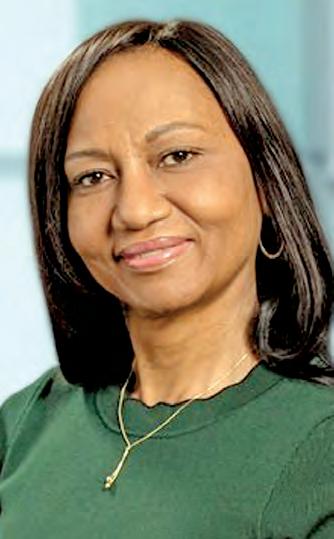
and Vice
for all. I also continue to serve as Vice Chair for Commercial Banking, building and managing key client relationships from coast to coast.
2) What does Black History Month mean to you and how are you celebrating?
Black History Month is an important opportunity to reflect on the achievements and struggles of our Black communities. To me, this means honoring the immense reach, depth and richness of Black communities’ global history, in addition to its connection and intersection with other communities. At JPMorgan Chase, we organize events and activities to honor the designation, highlight Black history and culture, and enable impactful conversations and opportunities to continue our commitment to help create more equitable pathways for all.
3) How is JPMorgan Chase working to advance a more inclusive economy?
We believe that we are only as strong as the communities we serve and the economies they support.
We also understand that our company can play a role in helping communities grow, driving local economies, and helping people build their prosperity.
We’re helping to power economic growth by breaking down barriers and creating opportunities in communities across the globe. We do that through a focus on advancing diversity, equity and inclusion within our own workforce, as well as through business and community investments and policy advocacy.
See FERGUSON, B2
By Alvin A. Reid St. Louis American
SoFi has teamed with the Jayson Tatum Foundation to help more underresourced St. Louis travel a path to home ownership.
When asked about purchasing his first home after signing with the Boston Celtics, Tatum told the Associated Press, “It didn’t seem real.”
Tatum wants to help others in his hometown of St. Louis have the same experience and SoFi has given his foundation $1 million to boost the effort.
Tatum’s nonprofit hosts toy drives, back-to-school giveaways and basketball camps in St. Louis. It also offers scholarships to St. Louis high school students along with mentoring.
The donation will be included in a program that will support single parents, an idea Tatum said he had for a long time and was waiting to find the right moment to launch.
SoFi will contribute the funds over three to five years and the foundation will determine how to select participants, who are not required to take out a mortgage through SoFi. SoFi will also offer all participants access to financial advisory services and tools.
“I can’t stress enough how excited I am just knowing how many lives and the families that we can impact,” Tatum said.
“And I can only imagine how much this would have impacted myself and my mom growing up.”
Tatum, 25, was raised by his mother, Brandy Cole-Barnes, who was 19 when he was born.
“Me and my mom, we didn’t know about investments or savings accounts when we were growing up. But obviously when I got to the NBA and started to make money, we had to ask questions and learn about things,” Tatum said.
“And it was always important for me, even when I was younger. I just knew I wanted to give back and help people that looked like me and grew up like me.
See TATUM, B2

United Way welcomes new board members
Jeremy Williams, Bayer head of Climate LLC, Digital Farming and Commercial Ecosystems , is one of seven new leaders joining the United Way of Greater St. Louis board of directors.
Also being named to the board are:

• Kyle Anderson, Leadership Council Southwestern Illinois, Executive Director
• Merri Berry, Missouri AFL-CIO, Secretary/Treasurer
• Katie Deatherage, UAW 2250, President
• Zach Gietl, Edward Jones, Director
• Jose Gomez, Laborers Local 110, Business Manager
• Lisa Weingarth, Washington University, Senior Advisor for St. Louis Initiatives
“The addition of these remarkably talented individuals will continue to expand our reach and impact in the region by incorporating their expertise into our decision-making processes,” said Michelle Tucker, United Way of Greater St. Louis president and CEO. “We look forward to collaborating closely with our new board members and the organizations they represent to collectively fuel efforts to empower our neighbors.”
Jewell elected to Boys and Girls Clubs board
Tesh Jewell, St. Louis Hospital
Ambulatory & Clinical Support Services vice president has been elected to the Boys & Girls Clubs of Greater St. Louis board of directors.

Tesh Jewell
She joins BGC’s board with a passion for children, having over 18 years of healthcare leadership experience in ambulatory operations, care management, hospital administration, project management, data analytics, and planning.
“Boys & Girls Clubs of Greater St. Louis annually touches over 12,000 area youth,” says Flint Fowler, BGC president. “Our mission is to do whatever it takes to help kids, families, and communities close the opportunity gap, ensuring young people have access to experiences and opportunities that improve their lives.”
Adolphus Pruitt to receive FBI community award
NAACP St. Louis President
Adolphus M. Pruitt II will receive a FBI Director’s Community Leadership Award on April 19, 2024, during a ceremony at FBI Headquarters in Washington, D.C.
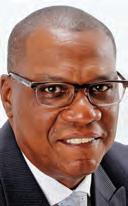
Adolphus Pruitt
FBI Director Christopher Wray will present the award to Pruitt and other honorees selected by FBI field offices across the country. The FBI created the DCLA in 1990 as a way to honor individuals or organizations for their outstanding service to the local community and enduring contributions to the advancement of justice.
Continued from B1
4) How has your company’s Diversity, Equity & Inclusion strategy evolved over the past couple of years as the spotlight has been put on the country’s lingering racial inequality and social injustice issues?
We’re working to address inequities, includ-
Continued from B1
Tatum said there are many St. Louisans trying
ing the racial wealth gap, in a meaningful way. Our efforts to support inclusive growth dates back decades. One more recent example is our $30 billion, five-year Racial Equity Commitment (REC) focused on advancing sustainable homeownership, driving small business growth, bolstering financial health and expanding access to banking. Through this commitment, we’re helping to create
to change their life and their situation. “It’s tough. Nobody was ever successful on their own. We all somewhere along the way needed help or assistance from
greater access to affordable home loans, lowcost checking accounts and financial health education workshops in the communities we serve and particularly in historically underserved neighborhoods. Our goal is to help close the racial wealth gap and ensure all members of communities – including our own employees – can access the resources they need to strengthen their economic
somebody that we knew or didn’t know,” he said. Anthony Noto, SoFi CEO, said in a release, “Buying a home is a significant milestone – representing stability, security,


futures.
5) How should other companies and individuals be thinking about diversity, equity and inclusion as it relates to the growth of their business?
Inequity stifles economic growth. If you start with that fact, it becomes clear how engaging more communities and helping to create more equitable opportunities are just
and investment – these are things we believe everyone deserves a chance at achieving on their financial journey.”
The gap between Black and white homeownership remains significant and difficult to narrow. Its persistence has reduced the ability for Black families to create and pass down wealth for generations.
While homeownership rates among all minority groups have increased recently, Black homeownership still lags the furthest behind the white homeownership rate, according to a report released this week from the National Association of Realtors using data from 2022, the most recent American Community Survey from the US Census Bureau.
While Black Americans also saw homeownership advance, the gain was modest. And at 44.1%, their rate is notably lower than that for Asian, Hispanic and white Americans. The gap between Black people and whites – the highest among the four major groups – widened by a
smart business. Diversity, Equity and Inclusion are not buzzwords. Their tenets should be core ingredients in the design and execution of your business strategies and run with the same commitment and rigor as other parts of your business.
6) What are your goals for this year and what are you looking forward to in 2024?
This year, my goals
include deepening our culture of inclusion for our 300,000 employees, across all backgrounds, geographies, and perspectives. I’m also focused on further embedding inclusive practices and solutions within JPMorgan Chase to inform our business, gain efficiencies and deepen impact. I am optimistic about the road ahead and continued progress in helping to lift all.

percentage point from 2012, to 28 percentage points.
“Minority homeownership gained ground,” Jessica Lautz, NAR deputy chief economist and vice president of research, said in a statement. “While the gains should be celebrated, the pathway into homeownership remains arduous for minority buyers.”
According to the NAR report, other home buyers of color have a more difficult time saving for a down payment, spending higher percentages of income on rent and student loan payment.
Black homebuyers reported the highest levels of student-loan
debt among all groups, with 41% carrying a record high median debt of $46,000, while 29% of Hispanic buyers had student loan debt with a median of $33,000. According to data from the Home Mortgage Disclosure Act, Black and Hispanic homebuyers face additional barriers in securing mortgages, such as higher denial rates compared with their white and Asian counterparts. Even after securing a loan challenges mount. The NAR report highlights that for loans originated in 2022, 20% for Black people and 21% for Hispanics exceeded 6%, in contrast with lower percentages among Asian and white borrowers.

n “You’re paying for that!”
– Cincinnati pitcher Hunter Greene to teammate Elly De La Cruz after Cruz’ foul ball smashed his car window

By Earl Austin Jr.
The regular season of high school basketball concludes this week with postseason action getting underway throughout the St. Louis area.

On the final day of the season on Friday, Vashon will be paying a visit to Ladue in a battle between two teams that have state championship aspirations. Both teams had an open date late in the season and decided to get together before one final postseason tuneup against a quality opponent. Vashon is currently ranked No. 1 in Class 4 while Ladue is ranked No. 2 in Class 5. Tip off is at 5:30 p.m. Vashon will enter next week’s postseason in search of its four consecutive Class 4 state championship. The Wolverines have compiled a 17-6 record against another challenging national schedule. They are led by junior guard Trey Williams Jr., who is averaging 13 points a game while shooting 43 percent from 3-point range. Junior forward Nicholas “Butta” Randall averages 10 points and 7.7 rebounds while 6’4” senior Nassir Binion averages 10.8 points. Junior guard Christian Williams averages eight points while shooting 42 percent from 3-point range.
The Ladue Rams finished second in the Class 5 state tournament last season. They have followed up with another tremen-
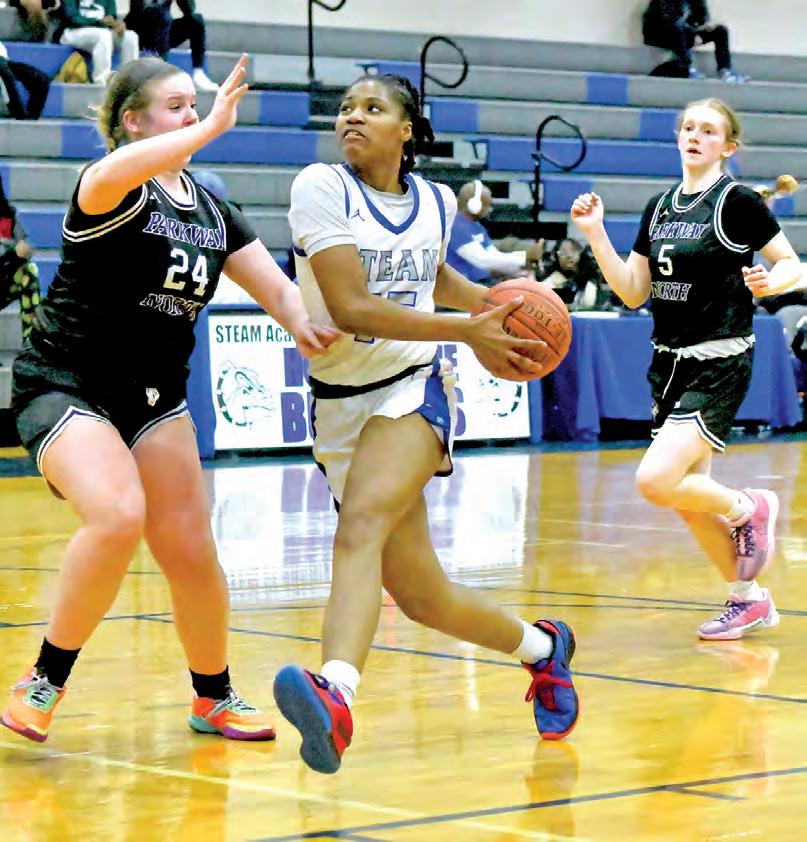
dous season with a 23-1 record, which includes victories over Webster Groves, John Burroughs and the championship of the MICDS Tournament.
The Rams are a team with excellent speed and defensive ability, and they know how to win close games. They are led by 6’3” senior guard Dwayne Foley, who averages 13 points and five rebounds a game. Sam Goellner is a 6’4” senior forward who averages 10 points
and four rebounds while shooting 38 percent from the field.
Also making big contributions for Ladue are 6’1” senior Piersson Calvert, who averages eight points a game and 6’3” junior Haydan Arnold, who averages seven points a game. Also in the mix are junior point guard Trisiah Edwards, 6’1” senior Isadore Ba and 6’1” sophomore Ahmaad Ba.
Alton Girls post back-to-back 30 wins
The Alton Redbirds accomplished something very special in girls basketball last weekend.
The Redbirds defeated Edwardsville 63-38 to win the IHSA Class 4A regional championship at Collinsville. It was the second consecutive regional title for Alton.
In addition to winning back to back regional championships, the
With Alvin A. Reid
STEAM Academy at McCluer South Berkeley High School’s Kayden Day (15) drives past Parkway North’s Alaynaa Morton (24) Monday, Feb.19, during a President’s Day twogame tourney at Berkeley. The Vikings of Parkway North went on to defeat the Bulldogs of Berkeley 53-49.
currently averaging 16 points, four assists and three steals a game while shooting 43 percent from 3-point range.
Senior guard Alyssa Lewis has been a consistent scoring threat throughout her career. She is averaging 10 points a game while shooting 42 percent from 3-point range. There is excellent talent on the front court with 6’0” junior Jarius Powers, who averages 14 points and six rebounds a game while shooting 57 percent from the field. Junior forward Talia Norman averages 7.9 points and 6.9 rebounds a game.
Sincerely yours
There is a saying that the NBA season consists of opening night, Christmas Day, MLK’s birthday celebration and everything after the AllStar Game.
Either fix the All-Star game or stop playing it. NBA East 211, NBA West 186. That says it all. Competition is non-existent and all-out effort is a memory. Gone are the days when players and coaches cared about the outcome of the contest.
Redbirds also won their 30th game of the season, giving them back to back seasons of at last 30 victories. Alton finished with a 31-2 record last season.
The Redbirds took a 30-2 record into Tuesday night’s sectional semifinal contest against O’Fallon.
Alton has been led by standout junior point guard Kyoko Proctor, who was a member of the St. Louis American “Fab Five” AllStar Team as a sophomore last season. Proctor is
current fan who would like to see a USA vs. The World concept. I like the idea because it would force American players to take the game seriously –because the international team certainly would.
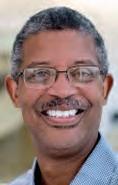
Tim Hardaway, a Basketball Hall of Fame member and five-time NBA All-Star attended the game and was not thrilled. He later mulled it over with former All Stars Dominique Williams and Mitch Richmond, who was the game’s MVP in 1995.
“You had to earn that MVP,” he said on The Carton Show on Fox Sports.
“We ran plays, set screens, played defense. This [game] was awful.
Hardaway is not the first former player or
In fact, if two rosters of 15 NBA players were assembled with the USA facing an international team of stars, the team of the world would be favored. I didn’t see the trophy presentation live because I gave up on the game long before it was over, but Commissioner David Silver was not impressed.
“And to the Eastern Conference All-Stars. You scored the most points. Well... Congratulations,” he said in a sarcastic tone with no expression. At 63, I can remember when the All-Star Game was not televised live. The players didn’t care, it was about bragging rights. Like the NBA, the All-Star Game soared in popularity and TV coverage once Larry Bird and Magic

Johnson arrived on the scene. Their personal duo and the historic animosity between the Boston Celtics and Los Angeles Lakers fueled spirited no-kidding-around basketball from both All-Star teams.
The NBA better get its act together, or its All-Star Game will be diluted into a skills challenge weekend –just ask the NFL.
In 1985, rookie Michael Jordan played in his first All-Star Game. Hardaway recalled the story that Isaiah Thomas purposely directed Jordan to the wrong bus, which delayed his arrival to Market Square Arena in
Indianapolis.
Then, Jordan’s Eastern Conference teammates “froze him out,” refusing to pass him the ball. Players on the West team did their part by harassing Jordan when he did have the ball. No freebies, friend.
Knowing the importance of the All-Star Game, and not being enamored with Jordan’s attitude, veteran players taught him a lesson. This is the All-Star Game the way I remember - and the way it should be.
The Reid Roundup
The highlight of NBA
Milwaukee Bucks guard Damian Lillard is surrounded by family after receiving the MVP trophy after the East defeated the West 211-186 in the NBA All-Star basketball game in Indianapolis, Sunday, Feb. 18, 2024.
All-Star Weekend was the three-point shoot-out between Steph Curry of the Golden State Warriors and Sabrina Ionescu of the WNBA New York Liberty. Each player used a regulation basketball and shot from the threepoint distance from the respective leagues. Curry prevailed 29-26, needing to hit four shots from his final rack of balls… While not as ridiculous as the All-Star Game, the slam dunk contest needs to re-charge its battery too. For the second consecutive season, Matt McClung won the contest. The guy is a G-League player and not
Junior guard Sincere Parker of Saint Louis University has been on a tremendous scoring roll during the past week. The 6’5” Parker was named the Player of the Week in the Atlantic 10 Conference after a pair of scoring outbursts on the Billikens’ two-game road swing in Philadelphia. Parker scored 33 points in the Billikens’ 102-80 victory over LaSalle, then followed up with 34 points in an 87-86 loss to St. Joseph’s. Parker kept up the scoring pace last weekend with 30 points against VCU, which is annually one of the top defensive teams in the A-10. Parker became the first Billiken player to score at least 30 points in three consecutive games since the great Larry Hughes accomplished the feat during the 1998 season.
on an NBA roster. The league should rule you must be on an All-Star Game roster to compete – and participants should be financially incentivized to volunteer… Dallas Cowboys linebacker Micah Parsons made more plays in the All-Star Celebrity Game than he did in some NFL games this season… Mecole Harman went from the New York Jets bench to the Kansas City Chiefs in October, was a Super Bowl hero in January and played in the Celebrity Game on Feb. 16. Amazing… Signaling that he expects to be released by the Denver Broncos, Russell Wilson’s $45 million estate in the Denver area is listed for sale. I would buy it, but it just has four bedrooms…Former St. Louis Rams great Torry Holt was again bypassed the Pro Football Hall of Fame voters. He had eight straight seasons with over 1100 yards, with six of them being over 1300 yards and deserves enshrinement.
KAI Enterprises provided the architecture, MEP engineering and interior design for the recently opened Five Oaks on Warson community center and a park maintenance facility in Olivette, Mo. The community Center replaces the city’s previous one—a 1962 former elementary school that has since been demolished.
It is located at 1200 N Warson Road on the former site of the Saints Roller Rink in Warson Park.
n Founded in 1980 by Michael Kennedy Sr., as Kennedy and Associates, KAI Enterprises is a national design and build firm with a diverse portfolio of experience.
KAI also followed sustainable practices on the facility’s building systems and incorporated recycled finishes in its design. A large hickory tree on the site that had to be removed was wood
kiln-dried and repurposed as the lobby’s fireplace mantle. Founded in 1980 by Michael Kennedy Sr., as Kennedy and Associates, KAI Enterprises is a national design and build firm with a diverse portfolio of experience, in-house multi-discipline professionals, and expertise in both design and construction delivery has grown into one of the largest minority-owned firms in the AEC industry. KAI Enterprises is comprised of four business units—KAI Design, KAI Engineering, KAI Build and KAI 360 Construction Services.

The Shepard McCaskill Foundation announced that it has selected Keyway Center for Diversion & Reentry (Keyway) as one of the inaugural recipients of this grant, which provides approximately $550,000 over the course of two years, primarily to be used for general
operating expenses and staff wellness initiatives.
The Shepard McCaskill Foundation established the grant as part of its efforts to aid reentry and supportive services for justice-involved individuals and their families.
Keyway Center for Diversion & Reentry’s
mission is to advocate for and assist women in the criminal justice system by supporting their successful transition to family and community. The proudly St. Louis-based non-

profit agency does this by offering comprehensive, wraparound services aimed at meeting clients’ specific needs while leveraging their strengths.
According to Jeanice Baker,
Keyway president and CFO, the organization empowers women, strengthens families, and transforms communities by providing services that include supportive housing, case management, life skills education, vocational assistance, behavioral health services, peer sup-
World Wide Technology Raceway – the home of NASCAR, INDYCAR and NHRA in the St. Louis-Metro East region -- will host two job fairs in March in preparation for the 2024 events season. Many positions in all departments are available. Positions are also available at the Gateway Kartplex.
• The first job fair will take place on Saturday, March 2, from 9 a.m. to noon.
• The second will be held on Thursday, March
7, from 5 p.m. to 8 p.m.
• Both job fairs will be held in the infield media center, inside the oval track.
• To access an online application, please visit: https://wwtraceway. com/job-application/.

• World Wide Technology Raceway is located at 700 Raceway Blvd. in Madison, Illinois. Prospective candidates should bring a resume and identification. Please bring a completed application or your own pen
port, mentor partnerships, and provision of necessities, It also provides food, transportation, and clothing. Formerly known as the Center for Women in Transition, Keyway changed its name during its 25th anniversary in 2022.
to complete an application in person.
World Wide Technology Raceway is the only track in the world to host the premier series of NASCAR, INDYCAR, and NHRA. Its facilities include a quarter-mile
art karting facility), and the adjacent Gateway National Golf Links.

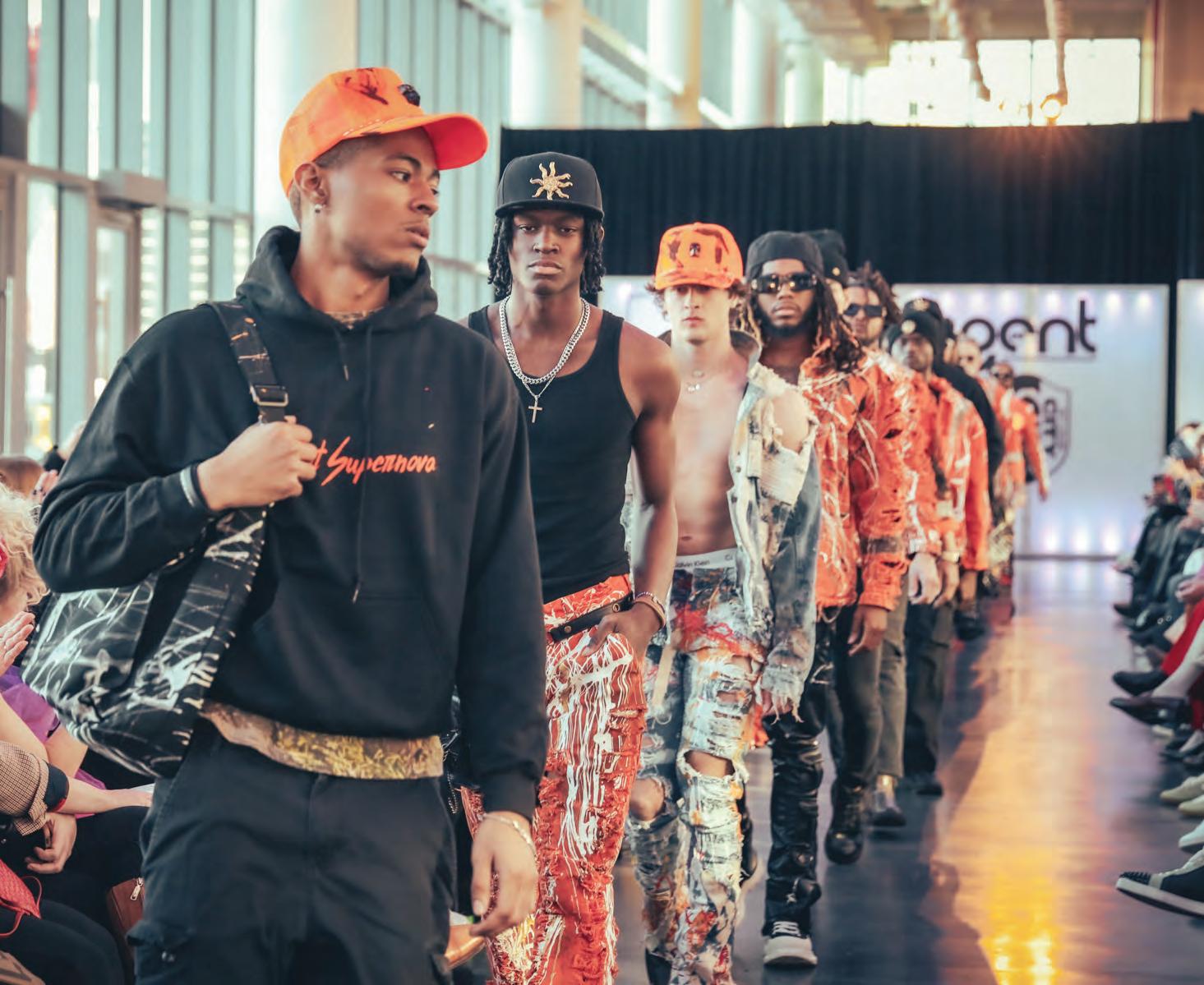

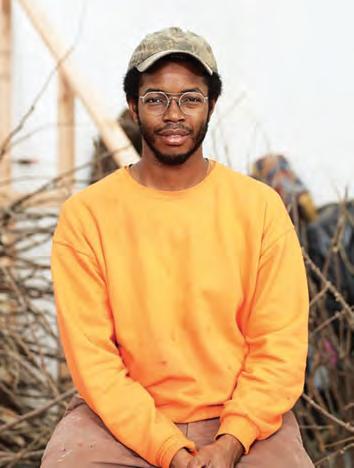
By Kenya Vaughn The St. Louis American
The swag was on overload Sunday afternoon at CITYPARK’s Ultra Club. It was three days before St. Louis CITY SC faced Houston Dynamo FC to kick off their 2024 season by way of the CONCACAF Champions Cup. The super stylish crowd wasn’t gathered for a team rally – though there was plenty of team spirit in the building. The indoor event space was packed with fashionistas eager for a runway experience that demonstrated how men’s style and St. Louis soccer fandom traversed courtesy of the culminating event for Gent Men’s Fashion Week.
Runway at CITYPARK, created and produced by Brainchild Next CEO Dwight Carter, was also one of the 10

By Jeremy D. Goodwin St. Louis Public Radio
major style events to commemorate the tenth anniversary of the Saint Louis Fashion Fund.
Carter is on the Saint Louis Fashion Fund Board. He is also a part of the St. Louis CITY SC family, charged with the task of teaching fundamentals of the sport to the next generation.
“Dwight serves as the perfect example of the intersection between fashion and sports,” said Fox 2 sports anchor Daniel

Esteve, who served as master of ceremonies for the event. “He is an actual coach for the St. Louis City Futures team to bring high class soccer to some of the youth throughout the St. Louis region.”
He wasn’t the only one.
“Blending performance and aesthetics to redefine the boundaries of sports and fashion resulting in professional athletes around the world driving many trends in fashion and in football,” said Lee Broughton, Chief Branding Architect and
See Fashion, C8

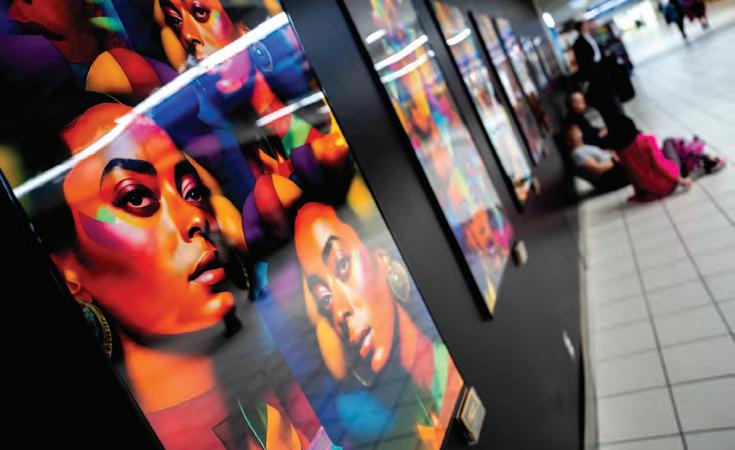
Dawn Suggs
The St. Louis American
In Hugh Hayden’s show, ‘American Vernacular’ at the Aronson Fine Arts Center there’s something for everyone and not necessarily because the artist seeks to please, although there’s a lot of pleasure to be had visually and viscerally, along with disquiet, from this exhibition which challenges notions of the American dream and belonging.
Hayden engages
n While others may see his artwork as a reflection of experience, it’s not just a conceit, it’s personal.
A gallery visitor asked Hayden during his talk, which was a part of the show’s opening debut program on Saturday, Feb 10, if the pregnant tree with male genitalia piece, Geppetto (2023, Cherry bark on acrylic on resin and White Oak, 25 x 15 x 10 inches, loaned courtesy of Lisson Gallery) might be a meditation on African American women raising their children without men after surviving the Middle Passage from Africa? Hayden did not claim this intention, or affirm the visitor’s interpretation; however, he smiled at the strong response she had and stressed during the talk and in an interview afterwards with The St. Louis American that people are going to have their own perception about the meaning of his work based on what they bring to it and how they react to different motifs and elements of a piece. He hopes that people’s reaction to his work will spur further conversation and consideration of culture, race, history, gender, sexuality, and the ways in which people experience America differently.
America and Americans are not a monolith
Hayden spoke to The St. Louis American about his practice of sculpting vegetation, utilizing materials found in nature, trees, tree bark, branches; materials which emulate grass, hay; and everyday objects found in daily life, because of their relatability. He seems interested in
Hayden, C3
CONCERTS AND LIVE SHOWS
October London presents ‘The Rebirth of Marvin’ Soul singer October London with J. Brown and The Shindellas
2/22/2024 8:00pm The Hawthorn
2231 Washington Avenue
St. Louis, MO
$39.50 to $157.54
Chants of Africa
2/23/2024, 3:00pm - 4:40pm 2/25/2024, 3:00pm - 4:40pm A celebration of Africa and the roots of African American song tradition features Togolese-French singer Prisca Agbo. It’s a sing-along event for the whole family.
Pilgrim Congregational Church
826 N. Union Blvd. St. Louis, MO
$10.00 —Discount tickets-email info@imusici.org or call 314-652-6800.
Phora - Saints and Sinners Tour
2/23/2024 8:00pm The Hawthorn
2231 Washington Avenue St. Louis, MO
$25.00
Lift Every Voice
St. Louis Symphony Orchestra Special Guest: Bebe Winans
2/23/2024 7:30pm Stifel Theatre 1400 Market Street St. Louis, MO
$27.00 - $67.00
Lift Every Voice and Sing (Travel to Concert)
2/23/2024 5:45pm In Unison Chorus as they are accompanied by the St. Louis Symphony Orchestra to present “Lift Every Voice and Sing”, a
Black History Month celebration. (Depart from the Hazelwood Community Center 1186 Teson Road Hazelwood, MO)
The Jazz Story
2/27/2024 10:00am Sheldon Concert Hall and Art Galleries 3648 Washington Blvd St. Louis, MO Free
African American Heritage Celebration
2/28/2024 6:00pm St. Louis City Hall St. Louis, MO Free
Civic Pride Explorer Series Event at Zack Theater
2/28/2024 4:30pm
Cbabi Bayoc willshare his work and his strong relationship with the Kranzberg Arts family and the arts community. Zack Theatre 3224 Locust Street St. Louis, MO Free
City Council Meeting
2/27/2024 7:00pm Ferguson City Hall 110 Church Street Ferguson, MO
ART ACTIVITIES, EXHIBITS AND MUSEUMS
Q&A with Kahlil Robert Irving
2/23/2024 5:30pm As part of the opening celebrations for Kahlil Robert Irving: Archaeology of the Present, artist Kahlil Irving is known for his ceramic assemblages made

of layered images and replicas of everyday objects often considered detritus but that are representative of a historical moment, a way of life, or even specific individuals. Irving and Walker will discuss Black life and collective memory of urban landscapes and more.
Steinberg Hall Auditorium 1 Brookings Dr. St. Louis, MO Free
Black History Month Movie Night 2/28/2024
Mississippi Summer Project | Freedom Summer (VENUE?)
The fight for the right to vote 5959 Delmar Blvd. St. Louis, MO
St. Louis African American History and Genealogy Society




Bustani Ya Upenda St. Louis, MO Virtual
Black History and the Disability Rights Movement
2/29/2024 5:00pm Missouri History Museum 5700 Lindell Blvd St. Louis, MO
Night Out / Mud + Merlot: Incense Holders 2/23/2024 6:30pm Learning slab construction and explore surface textures to create a ceramic incense holder for an aromatic experience. Laumeier Sculpture Park 12580 Rott Road St. Louis, MO Other Worlds - a juried art exhibit
2/23/2024 12:00pm
2/26/2024 12:00pm
2/27/2024
Workshop
2/28/2024 1:00–3:00pm
Missouri History Museum 5700 Lindell Blvd St. Louis, MO
Senior Scene - Griot Museum of Black History
2/28/2024 10:30am 55+
Celebrate Black History Month at the Griot Museum of Black History and lunch at the King of Soul restaurant in Ferguson. Shuttle pickups will begin at 9:30 AM. Hazelwood Community Center 1186 Teson Road Hazelwood, MO
Afrofuturism Family Movie Series: SpiderMan: Into the Spiderverse (2018) 2/27/2024 5:00pm Buder Library
St. Louis, MO
The Missouri Botanical Garden Celebrates Black History Month 2/24/2024 11:00am
Missouri Botanical Garden 4344 Shaw Blvd St. Louis, MO
See STL: Forest Park 2/24/2024 12:00pm
Explore one of our country’s best parks as we combine a tranquil guided walk with stories of the (sometimes) raucous, (totally) rule-breaking, and (undoubtedly) inspiring people who shaped St. Louis. Missouri History Museum 5700 Lindell Blvd St. Louis, MO
Black History Month Trivia Night-Hosted by Good Journey 2/25/2024 2:00pm
























Continued from C1
nature as a great equalizer. Other preferred objects in the show include pots and pans, tables and chairs, school desks, sports gear and equipment.
In America, and throughout the world, some people are made to feel they don’t belong or are not accepted relative to a pervasive culture or ideology. Hayden’s selection of certain elements, objects and materials which are regarded as essential to daily life, offer an accessibility to his work, his sculptures, to people from varied walks of life.
His work could be viewed as a descendant of Dadaism: readymades –everyday objects taken out of their regular environment and recontextualized, typically by being placed in an art show, art gallery or museum, and invested with new meaning as a result of this act, making them a commodity, assigning them value as works of art. This avant-garde art movement critiqued notions of art and commented on the brutality and absurdity of World War I in protest.
When The St. Louis American asked if he was influenced by Dadaism or Surrealism, Hayden responded that sometime people try and label him and his work as “absurd” or “humorous;” however, what he seeks to achieve is the juxtaposition of different ideas and materials to create something which may seem challenging, but is actually “my life,” he said. While others may see his art work as a reflection of experience, it’s not just a conceit, it’s personal. There is a clear connection to African sculpture in his series of skillets where facial masks emerge with features which simulate those of masks created by Baule or Dan people of Côte d’Ivoire or the Lega people of the Democratic Republic of Congo. Hayden mixes the sacred with the profane. Simulated African masks invested with a sense of spirituality and ritual are mixed with a mundane object, a pan or a skillet. These masks are hypnotic in their aesthetics: projected lines and circles, triangles and ovals make up facial features, some with protruding eyes and lips which draw the eye. Mundane objects that are transformed into dynamic pieces of art, which can be made utilitarian again and used ritualistically or routinely. Hayden underscores this point in an Instagram post from June 15, 2020, which shows him cooking in one of his pans in which a mask emerges. The piece used is called Jazz 12 (2020 Cast iron, 19 5/8 x 15 3/4 x 3 1/2 inches, Loan courtesy of Noel D. Kirnon).
The origin of form and choice of materials, his approach to making art, he divulges comes from his work as an architect.

Hugh Hayden, stands next to his work, Untitled (Dog ear picket), 2018. Sculpted eastern red cedar on plywood 49 x 49 1/2 x 32 1/2 inches. Private Collection, New York © Hugh Hayden; Courtesy Lisson Gallery. Hugh Hayden’s exhibit “American Vernacula” at the Aronson Fine Arts Center at Laumeier Sculpture Park is on view until May 12, 2024.
Instead of taking a page out of the books about Surrealism and Dadaism, Hayden’s work is more likely to pierce them because a book could not be laid flat, undisturbed on one of his desks. The educational environment is portrayed as an unwieldy threatening one, with branches growing out of the chairs and desks. This is not an environment which can be neatly controlled and contained for an inquisitive student who is viewed as the “other,” treated as someone outside of, or at odds with, the norms; or rather at odds with a mythic homogenous American culture rooted in white supremacy.
Live Art and Artist
Hayden did speak of his work in relation to modern and contemporary American artists. He mentioned studying architecture at Cornell and working as an architect in New York before he had an artistic awakening. Prior to that he recalls associating fine art with dead people. Hayden said meeting Derek Adams, a living Black artist, made an impact on him. Adams, described by Art Magazine as an artist known for his” vivid depictions of Black joy,” showed Hayden how art could be relevant to current times and being alive today.
He referenced Jasper Johns, when we were viewing the different images made up of red, white and blue lights on a panel which acts as a screen; images including emojis, and the American flag with heart imprints (Hypnotism, 2017-2020, Erykah Badu’s ‘On & On,’ Plywood, fir, emergency lights, milk paint, fire retardant, steel hardware, electrical equipment, wiring, computer, speakers 97 1/2 x 96 x 48 inches, Loaned courtesy of Lisson Gallery), displayed in front of rows and rows of what resembles regular wooden church pews (Good Hair
1, 2021, Found oak church pews, red nylon epoxy 8 total, Dimensions variableLoaned courtesy of Lisson Gallery), but when you get close to look upon them you realize that the pews are all lined with red bristles rather than seat cushions. While the bristle is well-manicured, and the order of the pews might be pleasing to the eye, there’s an obvious discomfort and lack of ease rendered by this tableau. The pews are so neatly laid out and inviting for a rest, but you can’t really sit down on them because the bristles will poke you. You also can not rest and relax in the environment due to the continuous flashing of the red, white and blue lights, intensified by their reflection against the window of the gallery, which mirrors and encloses a space in which you’re kept alert. One might enjoy the light show and their strobing effect as a form of pleasure, but there is an insistence to it, which a viewer can walk away from. Hugh spoke about flashing lights of police cars that some neighborhoods experience routinely, even while in the midst of worshiping.
This tableau piece was the largest, most extensive, structure inside the gallery, but there are other works of scale, which should not be missed; including Hayden’s forest of chairs sprouting branches which is exhibited just outside of the Aronson Fine Arts gallery in the Laumeier Sculpture park (Brier Patch, 2022 Cedar and aluminum One hundred objects; 75 with branches, each approximately 96 × 96 × 96 inches; 25 without branches, each 36 × 28 × 27 inches, Collection the artist, courtesy of Madison Square Park Conservancy). This piece was previewed before the rest of the show at Laumeier Sculpture Park in early November 2023. Another compelling work inside the gallery of noticeable scale is 3 Story Rapunzel (2024 PVC, powder coated steel, hair 48 x 60 x 24 inches, Courtesy Lisson Gallery),

a basketball hoop with a descending net, which appears to be well over ten feet of long black hair weave. Hair weaves and extensions are certainly a feature of contemporary life. Hayden and his assistants learned how to weave hair extensions in order to create the elongated net and he said that it took hours and hours to finish. We discussed the current fashion of Black women and girls wearing braids that go past their waists, and in some cases nearly touch the floor. The woven black net extending from the basketball may recall the German tale of Rapunzel, a beautiful girl who is locked in a tower by a witch and who finds agency and is able to escape by extending her long hair to the ground. For others it may call to mind
the power of basketball as a vehicle for some outsiders in the US, namely African Americans, who may strive to achieve the American dream, and the precarious nature of this track. Hair can be fragile, break off or be cut, and basketball players can get injured. It must be stated that this is an art show which kids may find as engaging as adults. Many of the sculptures seem to penetrate the space between the viewer and the protective markers provided to delineate a safe distance between a gallery visitor and a work of art. Hayden talked about hoping visitors would have a visceral experience with his work. Providing a visceral experience is one thing, doing so with precision, great craftsmanship, artistry and acumen all of which Hayden’s work employs can move the experience into the sublime. As an architect, he is used to working with teams to create exacting work in size, detail and labor. The audience chuckled during the talk when Hayden mentioned that some people regard him as a micromanager.
He works with people who construct specific elements of his pieces, work with the materials regularly and have earned reputations as excellent at their crafts, but he insists on putting his mark and interpretation on things, making sure an object is rendered with specific details that may go against convention. He admires and respects the artisans, production teams and construction crews he works with, but he must be able to manipulate and determine the end product. If he doesn’t make his mark, then it won’t feel like his work, and won’t be as much fun or as satisfying to create. He was insistent about this and those who get to experience his work in person, the power of its evocation and aesthetics, will be pleased that this architect turned sculptor micromanages the way that he does. The work is exquisite and the reward bountiful.
Hugh Hayden “Amer-


40 days to prepare believers for the resurrection of Jesus
By Dorothy S. Boulware Word in Black
Lent is the season on the Christian calendar that takes us back to basics and demands we remember the ABCs of our faith.
It began on February 14, 2024, on Ash Wednesday, which is 46 days before Easter (46 because Sundays are not included in the count), and its purpose is to prepare believers for a heartier appreciation for the passion-filled journey and, ultimately, the resurrection of Jesus Christ.
“Often referred to as the holiest season, Lent invites us to acknowledge that our imminent mortality is but a pretext to our never-ending story,” says Rev. Dr. Rodney L. Graves, a retired United Methodist pastor, living in Houston.
“Biblically, 40 signifies God’s period of refinement, and Lent patterns Jesus’ 40 days in the wilderness being tried and tested. Through spiritual disciplines such as prayer, fasting, and reflection, we experience renewed life.”
But the thought of the season — and its impending approach — always prompts conversation among Christians about what we should give up for Lent.
Giving up means substituting the time that thing or activity occupies with time in prayer, meditation, reading scripture, or
serving and performing righteous deeds.
While Lent is not mentioned in the Bible, the Old Testament speaks of donning sackcloth and ashes to denote periods of sadness, sorrow, or mourning.
So many begin their sojourn with a cross of ashes on their forehead that they received at a worship service.
For many years now, churches have tried to make it more convenient by scheduling services multiple times a day to fit varied schedules. They’ve even chosen community locations outside the church where people could drive up and receive their ashes and continue on their way: ashes-togo.
Some people choose sacrificial giving by making larger than usual donations to their favorite charities.
Others choose sacrificial action, such as volunteering, in lieu of giving up something.
As an example of righteous action, multiple groups launched a weekly Lenten Ceasefire Campaign, beginning with a Catholic Mass and followed by an ecumenical public witness, to call attention to and in mourning for the tens of thousands of lives destroyed in Gaza and Israel since October 7, 2023, according to a release by Friends of Sabeel North America (FOSNA) News, a Christian Voice for Palestine.

“The organizations involved with this Lenten campaign believe the focus must shift to diplomacy, accountability mechanisms and strategic peacebuilding, and that neither war nor retribution is sustainable,” according to the statement. “We believe urgent action is needed to stop the mass slaughter, destruction and generational trauma.”
Technology and today’s worship
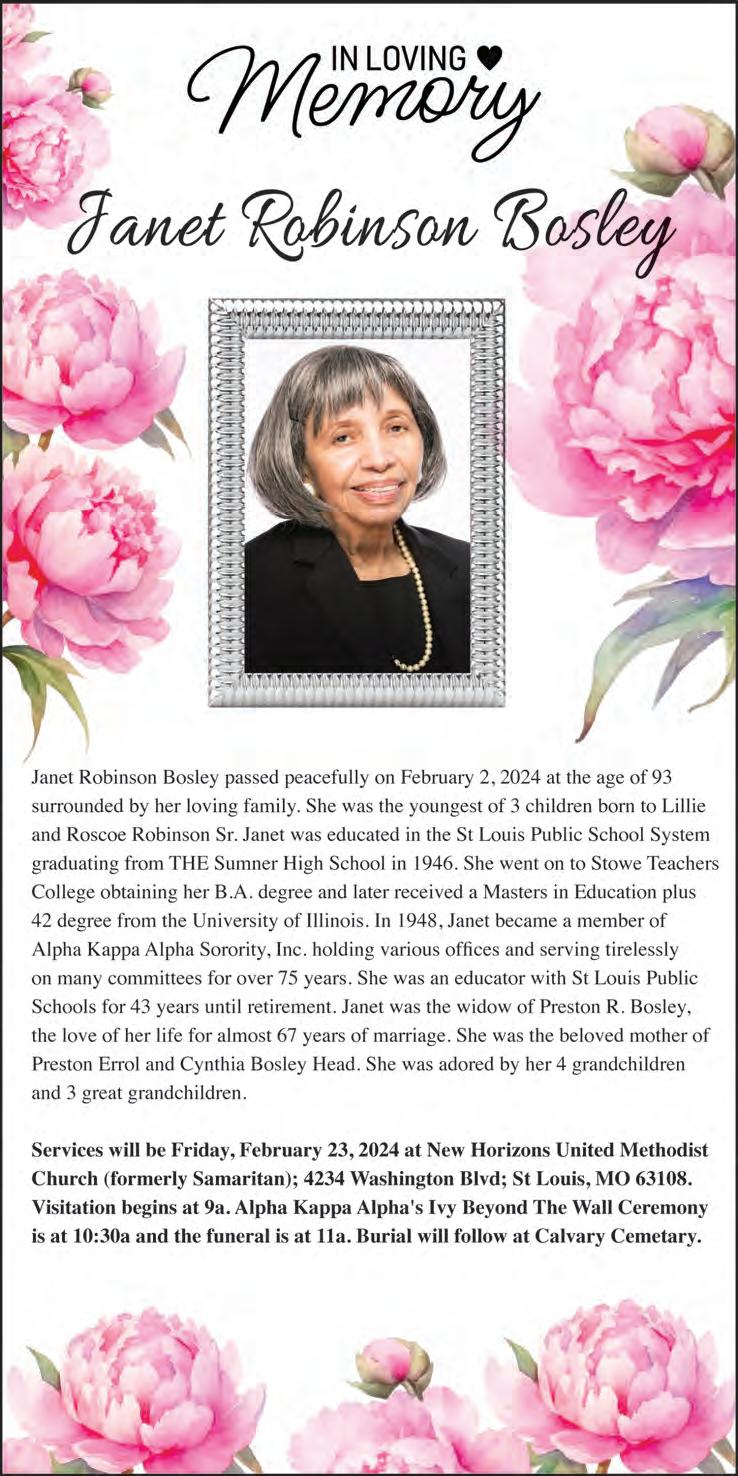
Technology is always a helper in this age and help for Lent is no exception. Hallow calls itself a Christian prayer app and offers daily prayers, meditation, sleep Bible stories, rosary, and community connections, in addition to special assistance for Lent. There’s also the option to pray with Mark Wahlberg.
For those who live in Brooklyn, the Diocese there offers an app for support through a
Lenten Pilgrimage, for which the app is named, with information on participating churches to visit throughout the Lenten season. One can also post prayer requests.
Dr. Graves shares his prayer that our “Lenten discipline also empowers us to not only learn more about our history, but also to dedicate ourselves to making history in the here and now.”
The Rev. Dorothy S. Boulware is Word In Black religion writer
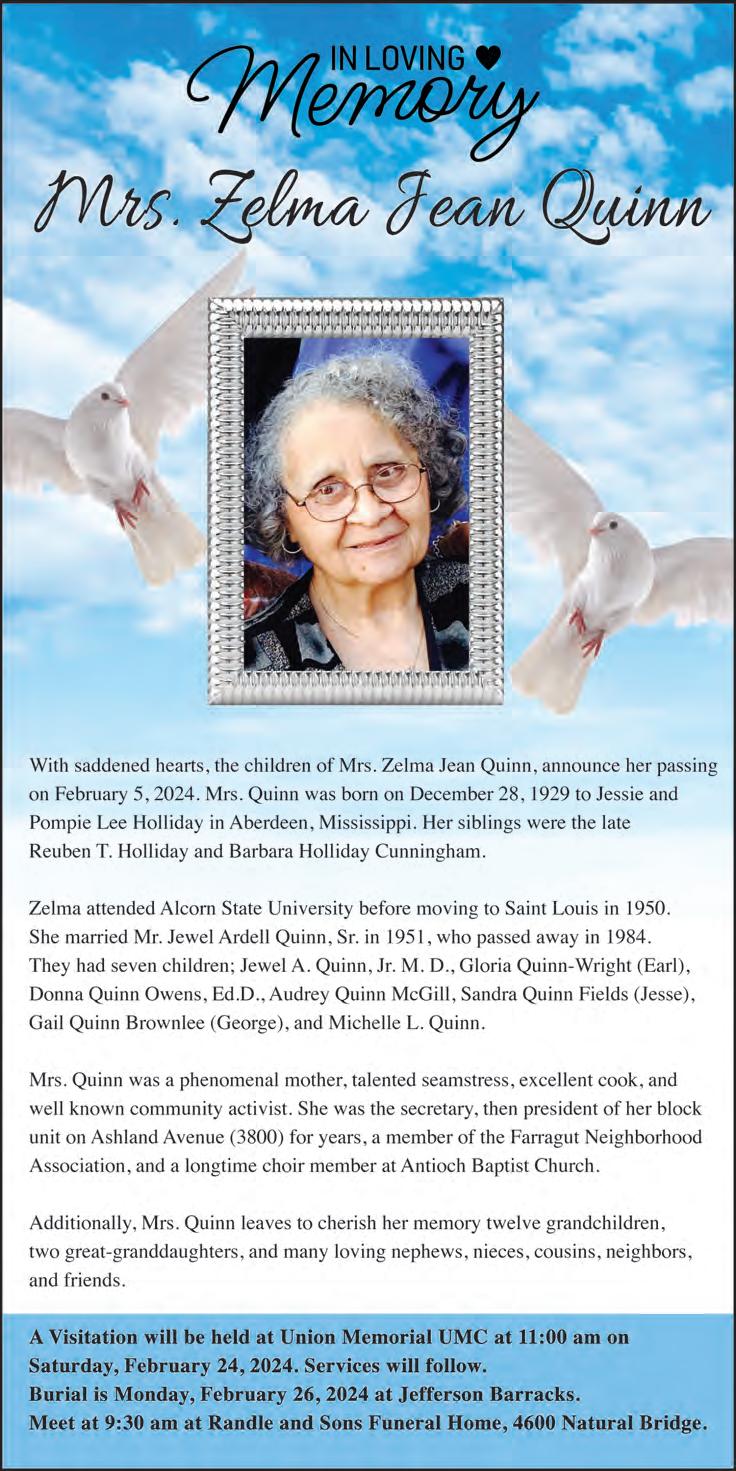


CUSTODIAL/ DISHWASHER LEMAY, MO SENIOR COMMUNITY CENTER
9:00am – 3:00pm Mon-Fri
$14.30/hr. Full Benefits. 13pd Holidays & 17 days PTO. Dishwashing & Custodial duties. Must be able to lift 40 lbs. floor to waist and stand for up to 4 hours. Must have H.S. Diploma or equivalent, basic math and computer skills. Must pass pre-employment drug test & background check. For more information call Laura at 636-207-4231 or email LREICH@AGINGAHEAD.ORG EOE
Girl Scouts of Eastern Missouri is hiring for two full-time positions: Community Engagement Manager and Facilities & Office Services Assistant. To apply, visit www. girlscoutsem.org. We are a proud Equal Opportunity Employer, and we encourage applicants from diverse backgrounds to apply.

The St. Louis City Family Court is seeking proposals from service providers to address behaviors that have resulted in referrals to the Family Court. Proposals should be submitted no later than 4:00 p.m. on March 1, 2024. Interested service providers may obtain the Proposal Specifications by accessing www.stlcitycircuitcourt. com then check for Request For Proposal under General Information and follow the FSCS Proposal Specifications.
Reinhardt Construction LLC is Soliciting Bids from MBE/WBE/DBE/ Veteran/SDVE for the following: CP231262 University of Missouri – Schweitzer Hall – Roof Replacement
Contact: Mike Murray ; mikem@ reinhardtconstructionllc. com
Phone: 573-682-5505
Great Rivers Greenway is partnering with MDOT and requesting qualifications for Construction Engineering for the Brickline Greenway. Go to www.greatriversgreenway.org/jobsbids and submit by February 29, 2024.
Sealed bids for the Weidman Road ARS Resurfacing project, St. Louis County Project No. AR-1743, Federal Project No. STP-5538(603), will be received electronically thru the County’s Vendor Self Service portal at https://stlouiscountymovendors. munisselfservice.com/Vendors/ default.aspx, until 2:00 PM on February 28, 2024
Plans and specifications will be available on January 22, 2024 from the St. Louis County Web Site (www.stlouiscountymo.gov) or by contacting Cross Rhodes Print & Technologies, 2731 South Jefferson Avenue, St. Louis, MO 63118 (314) 678-0087.
DIRECTOR OF PROCUREMENT AND ADMINISTRATIVE SERVICES ST. LOUIS, COUNTY
Great Rivers Greenway is soliciting bids for Mississippi Greenway: Leonor K. Sullivan Access Improvements. Go to www. greatriversgreenway. org/jobs-bids and submit by March 14, 2024.
K&S Associates is soliciting MBE/WBE/ SDVE/DBE/VBE for the following project for the Month of February 2024 – UMSL DEPARTMENT OF MUSIC AND ART + DESIGN CONSOLIDATION. Plans and specs can be viewed by visiting WWW.KSGCSTL.COM or please call us at 314-647-3535 for more details. Please submit bids to estimating@ksgcstl.com
Advertised herein is subject to the Federal Fair Housing Act, which makes it illegal to advertise any preference, imitation, or discrimination because of race, color, religion, sex, handicap, familial\status, or national origin, or intention to make any such preference, limitation, or discrimination.“We will not knowingly accept any advertising for real estate which is in violation of the law. All persons are hereby informed that all dwellings advertised are available on an equal opportunity basis.”
Call Angelita Houston at 314-289-5430 or email ahouston@stlamerican.com to place your ads today!
Department of Music and Art+Design Consolidation for the University of Missouri(UMSL)
The job bids on 2/23/2024 at 1:00 PM The Contractor shall have as a goal, subcontracting with Minority Business Enterprise (MBE) of fifteen percent (15%), with Service Disabled Veteran Owned Business (SDVE) of three percent (3%); and with Women Business Enterprise (WBE), Disadvantage Business Enterprise (DBE), and/or Veteran Owned Business of ten percent (10%) of awarded contract price for work to be performed. Please send all proposals to bids@hankinsmidwest.com. If you have any questions please feel free to contact our office at 314-426-7030.
Will receive separate sealed bids for CONTRACT NO. F24 405, Painting of Exterior Elevations at Forest Park Campus, until March 14 2024 until 2:00 p.m. local time .
Bids will be publicly opened and read aloud at the office of the Director of Engineering and Design, 5464 Highland Park, St. Louis, MO 63110-1314.
Specifications, bid forms and other related contract information may be obtained on Bonfire.
Questions regarding the scope of work should be directed to Jeff Blankenship Jblankenship32@stlcc.edu or call (314) 644-9263.
A pre-bid meeting will be held on February 28, 2024 at the office of the Director of Engineering and Design. A walk-through of the project will follow the meeting. You may schedule a visit by contacting Jeff Blankenship; jblankenship32@stlcc.edu or call (314) 644-9263.
The College has the proposed minority goals MBE 15% and WBE 12%. Also proposed for Contractors to participate in a registered Apprenticeship Program approved through the United States Department of Labor.
Individuals with special needs as addressed by the ADA may contact: 314984-7673
Advertisement Date: 2/15/2024
An Equal Opportunity and Affirmative Action Employer
The Special School District of St. Louis County will be seeking sealed bids for Request for Proposal #SSD 109-24: Food Service Management. A mandatory pre-proposal meeting will be held on March 19, 2024, at 1:30pm. Proposals are due by April 4, 2024, at 2:00pm.
Notice is hereby given that the Metropolitan St. Louis Sewer District Requests for Quotes, Bids and Proposals are posted online for public download. Please navigate to www.msdprojectclear.org
> Doing Business With Us > View Bid Opportunities
Metropolitan St. Louis Sewer District is an Equal Opportunity Employer.
CITY
REQUEST FOR QUALIFICATIONS for PROFESSIONAL ENGINEERING SERVICES FOR LOUGHBOROUGH AVENUE BRIDGE RECONSTRUCTION, PROJECT NO. STBG5602(627). Statements of Qualifications due by 5:00 PM CT, February 28, 2024 through the Bid Express online portal at https:// www.bidexpress.com/ businesses/20618/home?agency=true. RFQ may be obtained from BPS website https://www.stlouis-mo. gov/government/ departments/publicservice/, under BPS RFQ and RFP Announcement, or email Board of Public Service at bryanth@stlouis-mo.gov 12% DBE participation goals
CITY OF ST. LOUIS BOARD OF PUBLIC SERVICE
REQUEST FOR QUALIFICATIONS FOR PROFESSIONAL SERVICES FOR NEW WEST DEICING PAD AT ST. LOUIS LAMBERT INTERNATIONAL AIRPORT. Statements of Qualifications due by 5:00 PM CT, MARCH 6, 2024 through the Bid Express online portal at https://www.bidexpress. com/businesses/20618/ home?agency=true. RFQ may be obtained from the BPS website https://www.stlouis-mo. gov/government/departments/public-service/ bps-online-plan-room.cfm under Online Plan RoomPlan Room, or call the Board of Public Service at 314-589-6214. 25.00% DBE participation goals.
REQUEST FOR QUALIFICATIONS for PROFESSIONAL ENGINEERING SERVICES FOR TRAFFIC MANAGEMENT ENHANCEMENTS, PHASE 6, DR. MLK DRIVE (HODIAMONT TO GRAND, CMAQ9901(699). Statements of Qualifications due by 5:00 PM CT, February 28, 2024 through the Bid Express online portal at https:// www.bidexpress.com/ businesses/20618/home?agency=true. RFQ may be obtained from BPS website https://www.stlouis-mo. gov/government/departments/public-service/, under BPS RFQ and RFP Announcement, or email Board of Public Service at bryanth@stlouis-mo.gov 12% DBE participation goals.
APARTMENTS
306 PINE LAKE ROAD
COLLINSVILLE, IL, 62234
Seniors 62 and older Apply now for an affordable 1-bedroom unit. Stop by the office or Call: (618) 345-7240 for an application Monday-Friday 8-5 Managed by Related
Bids for Upgrade Electrical and Restrooms, Grandstands, Project No. F2304-01 will be received by FMDC, State of MO, UNTIL 1:30 PM, 3/14/2024. For specific project information and ordering plans, go to: http://oa.mo. gov/ facilities
S REFUSE SMOKESTACKS
4100 S 1ST STREET
ST. LOUIS, MO 63111
The City of St. Louis Port Authority will receive Sealed Bids on 3/11/2024
For more info. Visit https://www.stlouis-mo.gov/government/departments/sldc/procurement/index.cfm
East-West Gateway Council of Governments is seeking comment on its proposed Title VI Program. The public comment period runs from Wednesday, February 7, 2024 through Friday, March 8, 2024, during which time the document will be posted online at www.ewgateway.org/titlevi.
The public is invited to view the document at one of two, virtual, open house style meetings that will take place on February 27 and March 4, 2024. Times and locations can be found online at www.ewgateway.org/titlevi. Questions and requests for an accommodation for an open house should be submitted to EWG at titlevi@ewgateway.org or (314) 421-4220 or (618) 274-2750. A request for an accommodation should be submitted to EWG at least 48 business hours prior to an open house. All comments on the document must be received or postmarked by midnight on March 8, 2024. Send comments to: titlevi@ewgateway.org or Attn.: Title VI Program Comments, East-West Gateway Council of Governments, 1 S. Memorial Dr., Suite 1600, St. Louis, MO 63102.

Castle Contracting requests bids from MBE & WBE subs/suppliers for the SSM Cardinal Glennon Children’s Hospital Site Package. The scope of work includes SWPPP, hauling, site utilities and grading. Bids are due by 2:00 PM CST on Wednesday February 28th, 2024. Interested parties can contact Ryan.Neff@ digcastle.com or by calling (314) 421-0042. Castle Contracting is proud to be an equal opportunity and affirmative action employer.
Kwame Building Group is requesting bids for some select demolition.
Project is located at 1408 N Kingshighway, St. Louis MO 63113 which is owned and operated by the Urban League of greater STL.
Requesting pricing to demo a 3-stop escalator and some interior walls.
Contact Ricky L Nance at 314-323-0174 or Mike McClain at 314-850-8294 for walk through. Bids are due 3 weeks from the placement of this ad to Ricky at rnance@kwamebuildinggroup.com
A
Point of Contact: Delia Cummings –dfcummings@flystl.com
Bid documents may be obtained at St. Louis Lambert International Airport, Airport Properties Division, Monday through Friday between 8:30 a.m. and 5:00 p.m., or by calling (314)426-8174. This SFB may also be obtained by visiting our website atwww.flystl.com/ business/contract-opportunites
Robert Salarano Airport Properties Division Manager
INVITATION FOR BID PARKVIEW APARTMENTS FIRST FLOOR RENOVATION
SOLICITATION NO.: RD24-07
The St. Louis Housing Authority (SLHA) seeks bids to perform the following project: The General Scope of Work for this project will consist of, but not be limited to, interior demolition, new partitions, new acoustic ceiling tile and gypsum board ceilings, new lighting and electrical devices, new security desk, relocation of existing doors and hardware, painting, and new floor finishes. Performance period to be 180 days.
Bid information available at https://www. slha.org/partner-with-slha/ on February 26, 2024
A pre-bid conference will be held on site at 10:30 AM (local time), Thursday, March 12, 2024 at the project site.
Sealed bids are due 2:30 PM (local time) Thursday, April 4, 2024 via QuestCDN or delivered personally at SLHA Offices at 3520 Page Blvd, Saint Louis, MO 63106.
Latasha Barnes Acting Contracting Officer
AN EQUAL OPPORTUNITY EMPLOYER


Bids for Replace Standby Generator, Troop B Headquarters Macon, MO Project No. R2310-01 will be received by FMDC, State of MO, UNTIL 1:30 PM, 3/21/24. For specific project information and ordering plans, go to: http:// oa.mo.gov/ facilities
Bids for Replace Emergency Generator, Sexual Offender Treatment Services Farmington, MO Project No. M201301 will be received by FMDC, State of MO, UNTIL 1:30 PM, 3/21/24 For specific project information and ordering plans, go to: http:// oa.mo.gov/ facilities
The St. Louis Economic Development Partnership and its affiliates (the “Partnership”) have issued multiple open Request for Qualifications (“RFQ”) from a wide variety of professional services/consulting firms for various projects initiated in 2024, including a separate RFQ for MWBE firms. These are “Open” RFQs to which the Partnership may refer as projects become available but shall not obligate the Partnership to issue a contract. The Partnership will accept submissions throughout 2024. The RFQs may be obtained at https://stlpartnership.com/rfprfq/. St. Louis Economic Development Partnership Equal Opportunity Employer
The St. Louis Development Corporation (“SLDC”) of the City of St. Louis is requesting proposal for tree trimming and/or removal.
The complete RFP can be viewed online at www.stlouis-mo.gov/sldc
The funding of this project, is financed in part through a grant from the Department of Housing and Urban Development and the Community Development Administration under the provision of Title 1 of the Housing and Community Development Act of 1974 (Pub. L 93-383 42 USC 5301 et seq) and/or HOME Title II of the National Affordable Housing Act of 1990, as amended (Public Law 101-625).
Bids for Upgrade HVAC Controls Staples Building, Project No M201101. will be received by FMDC, State of MO, UNTIL 1:30 PM, March 26, 2024. For specific project information and ordering plans, go to: http://oa.mo. gov/facilities

2024
The Saint Louis Zoo seeks bids from qualified firms to submit proposals for Vision, Organizational Structure, and Strategic Plan Partner RFP 2024. Bid documents are available as of 2/21/24 on the Saint Louis Zoo website: stlzoo.org/vendor
Citation Management, On-Street Meter Maintenance & Coin Collection, Booting & Towing Program, Delinquent Ticket Collections
City of St. Louis Treasurer’s Office
www.stltreasurer.org/ request-for-proposals

Alberici Constructors, Kwame Building Group and the Saint Louis Zoo seek bids from qualified firms to submit proposals for a project at the Saint Louis Zoo WildCare Park. The project consists of subcontractor scopes of work related to:
1. Procurement of electrical equipment
2. Civil and fencing work in the safari pastures
3. Motorized vertical observa tion tower and platform. To request bid documents, please send an E-mail to stlzoobids@alberici.com
Harris-Stowe State University (HSSU) is requesting proposals for Painting Services. If interested, a copy of the request for proposals can be obtained by emailing Barbara A. Morrow at email address: morrowb@ hssu.edu.
Proposals must be emailed no later than 10:00 a.m. on Thursday, February 29, 2024 (there will not be a public opening), and must be emailed to: morrowb@hssu.edu
The University reserves the right to accept or reject any or all responses received, or to cancel this request in part or in its entirety if it is in the best interest of the University to do so.

pieces include paintings by Neeka Allsup, digital collages by Alison Sissom and chess-themed artwork curated by the World Chess Hall of Fame.
“There is an investment in St. Louis artists in that program that is sometimes really hard to find. It’s an incredible opportunity for so many eyeballs that the artists can’t usually get on their own,” said Douglas Dale, who creates sculptures made of wood and yarn.
Artwork is displayed for about six months before a new round takes its place. The program receives 100 or so applications for each cycle. Artists receive stipends of $1,000 to $3,500. Some artists have taken the more lucrative step of selling their artwork to people who discovered it at Lambert.
Dale’s exhibition, “A Frayed Knot,” is on view by some windows in Terminal 1, near the exit from Concourse C. Their sculptural combinations of wood and fiber suggest a mixing of masculine and feminine qualities. The work is inspired by theater, drag and the club scene, Dale said.
On the way toward Gates 34 to 40 in Terminal 2, visitors can find seven paintings of locations in St. Louis by Amy Bautz. The exhibition is called “Homesick.” Bautz wants to encourage visitors to think about how their own neighborhoods might be viewed by visitors from elsewhere.
In the Kling Family Gallery, which visitors can access without having to pass through the security check, Rachel Lebo’s “Her Lilac Quilt” exhibition includes paintings showing scenes from the life of a fictional character created by the artist.
Lambert’s art program
was initially part of a broader effort to spruce up the facility after American Airlines dropped its hub there in 2009.
“There was just a lot of angst and really a lot of uncertainty about the airport. And what we wanted to try to do very early on was re-create sort of a sense of pride in the airport,” said Airport Director Rhonda HammNiebruegge. “We started thinking about how we can showcase the airport. How do we bring more of St. Louis into the airport, and get that sense of pride from all of our visitors and all of the residents in the region?” she added.
The art also gives visitors to the region a sense of the breadth of work made by St. Louis artists, Hamm-Niebruegge said.
Airport leaders pay for the program through grants, an annual gala and other fundraising.
For Shevaré Perry, being included in Lambert’s art program has brought an unexpected amount of visibility.
Her exhibition
“Flawless Beats: Pop Portraits of Women in Hip Hop and R&B,” is inspired by the pop art of Andy Warhol. It includes digital collage portraits of Solange Knowles, Erykah Badu, Lauryn Hill, Cardi B and Queen Latifah. It’s located in Terminal 2 across from Gate E33.
“I see people take selfies and post on social media and tag me. Or they send me videos of themselves in the airport with the artwork,” Perry said. “I didn’t know people would interact with it in that way. That means a lot. It means that my work is actually getting out there and it’s reaching people. It’s encouraging.”
This article was published with permission from https://www.stlpr. org/ as part of a content sharing partnership between St. Louis Public Radio and The St. Louis American.
ownership group member for St. Louis CITY SC. “Photos of our players decked out in some of their favorite fits are among some of the most popular posts on the team’s social media channels.”
Among the seven designers, two were St. Louis City SC players. Teammates Sam Adeniran and Aziel Jackson ripped the runway as models, but they also showcased their respective brands. Jackson’s First Move featured unique streetwear. Adeniran’s VAPS Dynasty Clothing ranged from casual looks to traditional African garb.
“It’s been a great journey. I love showing my clothing to all my teammates and to all the fans. They are always so supportive of it,” Adeniran said. “It’s also great to show my Nigerian heritage.”
Lukas Rice, Rocket Supernova, The Normal Brand, Ying Ying Ying, Paulie Gibson and Stuart Trevor gave a wide range of looks that illustrated the diversity and boldness that can be found within men’s fashion – which often takes a backseat to women’s wear when it comes to the runway.
“This collection is called Solaris Inferno,” said Rocket Supernova, who operates professionally under the moniker of his brand. “It’s very much high vibrational fire energy – like they just walked off of the sun.” His pieces included bold blends of distressed black denim and bright orange that resembled erupting lava. “You know how they say, ‘If you can’t take the heat, get out of the kitchen?’ Well, they’ve been in the kitchen,” Rocket Supernova said. “They live in the kitchen, and now they are coming out of the kitchen for y’all.”

Musical Experience for St. Louis CITY SC, performed live during Ying Ying Ying’s presentation of their latest line. If there was a note for next year, it would be to incorporate designs that are a nod to traditional suits and formalwear. Paulie Gibson demonstrated the most diversity in the looks he offered by way of color, structure, fabric and texture.
“I just tried to create something that was light and fun and full of color,” Gibson said.
UK designer Stuart Trevor, a co-founder of the London-based global fashion retailer AllSaints provided the show’s finale with the U.S. premiere of his sustainable fashion. He entered the arena of sustainable fashion five years ago after learning of the jarring statistics regarding fashion waste.
“There are piles of clothes the height of mount Everest going into landfills every seven minutes,” Trevor said. “They can see this from satellites in space as they fill up in places like Africa, Chile and Indonesia.”
Trevor’s brand takes existing garments and remixes them with restructure, embroidery, paint, sewing on patches and other accessories.
“We take other people’s waste and make walking works of art,” Trevor said. As Carter took a final bow, he proclaimed that his Gent would be the premiere men’s fashion week – and reminded the audience that buying from local brands is imperative if St. Louis is to reclaim its reputation as a fashion Mecca.
Blended in with the runway vets were celebrity models such as Five On Your Side anchor Rene Knott and KMOVTV anchor Maurice Drummond. Members from across the board of the St. Louis CITY SC organization participated
as well– including top management, players and the youth members of St. Louis CITY Futures.
The show was topnotch. One of the most memorable moments was when hip hop artist Mvstermind, who also serves as Director of
“I always say that the Fashion designers are the foundation of our industry,” Carter said. “Without the designers, we would not have an industry. If we don’t support them, there is no business. If we don’t help them build their business, then there are no jobs.”




By Aswad Walker Houston Defender
Alvin A. Reid St. Louis American
Black folks have a long history of
not only creating dynamic and vibrant businesses but entire business districts, all while surrounded by the ever-present threat and promise of white domestic terrorism.
Two of them are in Missouri, one in St. Louis and another in Kansas City.
Most of us are familiar with Black Wall Street. But to those knowledgeable, when you mention Black Wall Street, they’ll ask, “Which one?” And they will then probably run down a list like the one offered here, to show you just a sampling of our business ownership legacy in these so-called United States.
This legacy of Black business excellence is a shining example of all seven of the Kwanzaa principles in action: Unity (Umoja), Self-determination (Kujichagulia), Collective Work and Responsibility (Ujima), Cooperative Economics (Ujamaa), Purpose (Nia), Creativity (Kuumba), and Faith (Imani).
The Ville, St. Louis, Missouri
During the 1920s, this spot, the Ville in St. Louis, was viewed as the center of Black business and culture and boasted an “elite” community of Black professionals and entrepreneurs. Included in that group was Annie Malone, one of the nation’s first Black millionaires.
The Ville’s rise to the status of


St. Louis’ premier African American neighborhood was due partly to the great institutions and business that were locating in the Ville area, but also largely to the shaping forces of racial restrictive covenants in parts of St. Louis. At a time when these covenants
barred Black people and other minorities access to purchasing homes in much of St. Louis, the Ville was able to withstand these pressures and its population rose in response to 95% African American. The Ville, at this point in time, was a neighborhood that educated, housed, and entertained a sta -
‘Thirty
ble cross section of economic classes within the Black community.
The 18 th & Vine District of Kansas City
See District, D5
Extraordinary Life of one-time St. Louisan Elizabeth Keckley
By Sylvester Brown Jr. St. Louis American
Seamstress Elizabeth Keckley’s (also spelled Keckly) story was “tailor-made” for the annals of St. Louis Black history. Elizabeth (Lizzy) Hobbs Keckley was brought to St. Louis in 1847 by her Dinwiddie County, Virginia plantation owners, Colonel Armistead Burwell and
his wife, Mary. While Mary was pregnant with the couple’s tenth child, Burwell also impregnated an enslaved woman named Agnes (Aggy) Hobbs. Historians believe the pregnancy was likely the result of rape or a non-consensual encounter.
Aggy’s husband, George Pleasant Hobbs, was an enslaved man who worked on a nearby plantation. Even though Elizabeth was not his child, George remained devoted to his wife and child. Elizabeth considered George her father.
When Elizabeth was fourteen years old, Burwell sent her to North Carolina to work for his son, Robert. According to Keckley’s book, “Behind the Scenes or Thirty Years a Slave, and Four Years in the White House,” published in 1868,
Robert-a Presbyterian minister- “severely whipped,” her “often with no discernible provocation.”
Keckley also wrote that she was “repeatedly raped” by a local white store owner, Alexander McKenzie Kirkland, for four years, beginning in 1838. One of those “rapes” resulted in a pregnancy and the birth of her only son, George, who was named after Hobbs the enslaved man she steadfastly claimed to be her father.
After Burwell died in 1842, Elizabeth and her son returned to her former mistress, Mary, and son-in-law Hugh A. Garland. Broke and on the verge of bankruptcy, Garland set out for St. Louis,
By Janice Ellis
While many of us may not take time to celebrate love or Black history during the month of February, they both hold a lot in common and offer some valuable aspects we might want to consider. Among them: Understanding. Hope. Unity.
Understanding
In love, when we really want to know about a person or thing, we put forth the
effort to gain a better, if not thorough, understanding of every aspect of them. We want to.
With Black history, it is no different. We love America. How much do we want to fully understand her? How can that be achieved if we choose to ignore a big aspect of her history?
As we celebrate another Black History Month, there are efforts anew to either prevent, distort or recast American history, especially when it comes to the way Blacks have been regarded and treated. It occurring in the halls of Congress,
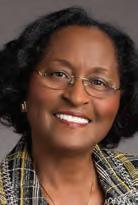
legislative bodies and school board meetings. Vigorous, and sometimes rancorous, discussions are occurring about what children should be taught about the Black experience and history. Much of the discussion is based on the false and misleading notion that a college level advanced course called “critical race theory” is being taught in grade and high schools. This is not occurring. Yet, it is being used to fuel the “antiwoke” movement that has infiltrated many political campaigns.
Proponents of the efforts to pass leg-
islation and to have parents monitor and dictate class curricula, when it comes to teaching factual and complete America history, proffer the reason that they are afraid it will make white children feel guilty for something they did not do. Occasionally, it is mentioned that it might make Black children feel victimized.
The Black experience and history in America, as the saying goes, “is what it is.” No amount of avoidance, elimination or recasting will change that. So, why not teach our children all of American history?
Hope
In love, we hope that our efforts to achieve a better understanding will form a strong foundation for a lasting relation-
See Ellis, D4
Continued from D1
Once a prime destination for lovers of jazz, this area of Kansas City not only had its share of world-class clubs, Black-owned restaurants and businesses of many other types abound.
Surely, the 18th & Vine District played a big part in inspiring Wilbert Harrison to sing the words, “I’m going to Kansas City, Kansas City here I come.”
When segregation was the law of the land, centers of thriving, bustling Blackowned businesses were a common sight in many U.S. cities. Here are just a few:
Greenwood Section of Tulsa, Oklahoma

Known as both “Little Africa” and “Black Wall Street,” the Greenwood section of Tulsa was one of the most successful and wealthiest Black communities in the country, which is saying something. Because there were many such communities that did quite well before state-sanctioned white domestic terrorism thwarted Blacks’ attempts to create generational wealth by destroying businesses, killing thousands, stealing land and
institutions, and more. The Tulsa Race Riot of 1921 was one such example of this wanton white violence mislabeled a “riot.”
Bronzeville, Chicago, Illinois
Located on the south side of Chicago,
Bronzeville became an established neighborhood around the turn of the 20th century. The Great Migration began in 1916, and by 1920, the number of Black residents in Chicago had surpassed 100,000. To redirect the community’s nominal identity, (it was called “Darkietown” by

A band marches on Greenwood Avenue in the Greenwood Business District of Tulsa, Okla. Photo courtesy of Greenwood Cultural Center 18th and Vine in Kansas City in the 1940s. The district has been revitalized and now is home to the National Negro Leagues Baseball Museum, a jazz museum and other attractions.
Photo courtesy of kcjazzdistrict.org
whites) James J. Gentry, an editor for Anthony Overton, proposed the term “Bronzeville” as a less derisive name for the small but impactful neighborhood. Thus, the name “Bronzeville” not only represents the community’s residents but represents resistance and the efforts of a community to define itself on its own terms.
Lyons Avenue, Fifth Ward, Houston
During its heyday in the 1940s and ’50s, Fifth Ward was dubbed the “Harlem of the South” for its vibrant musical heritage and bustling Black-owned businesses neighborhood.
The stretch of Lyons between Gregg and nearby Denver Harbor became one of the most vibrant Black neighborhoods of that era, and included many businesses like the Monte Carlo Night Club, Poor Man Café, Huckle-Buckle Inn, Harlem Shine Parlor, the Peacock Record Shop, the Congo Beer Bar, Silver Shoe Barbecue & Hot Links, and Rochelle’s Market.
The Hayti District of
Durham, North Carolina
Because the successful Haitian Revolution of the late 1790s and early 1800s inspired Black people across the U.S. during and after slavery, several Black communities nationwide named sections of their towns after the island nation, even if they altered the spelling a little, like the Hayti District of Durham. This thriving Black business district was home to the North Carolina Life Insurance Company and the Mechanics & Farmers Bank, two powerhouse Black businesses located on Parish Street. This community was also known as “Black Wall Street.”
The Greater U Street District of Washington, D.C.
For half a century (1900 – 1950) Black-owned businesses in the nation’s capital made their home in D.C.’s U Street area. For example, the Lincoln Center, a first-run entertainment house for Black folk served as one of the area’s shining star businesses.
Sweet Auburn, Atlanta, Georgia
This nation’s long (and ongoing) history of white domestic terrorism has played a significant role in destroying thriving Black business districts across the country. However, some historians contend that it was the Atlanta Race Riot of 1906 (remember, whenever you read the words “race riot” in a history book, that’s white historians covering up what it really was – white thug violence directed at Black people and their communities) that actually helped found Sweet Auburn, or what Fortune Magazine called “The Richest Negro Street in the World.”
proudly celebrates
Stifel Bank & Trust is a place where you can build a challenging and rewarding career with one of the industry’s most diverse and creative teams. We’re looking for professionals who are ready to do what it takes to help our associates and clients alike achieve their goals.
Scan the QR code below to learn more about our current openings, including:
• Bank Customer Relations Specialist, Loans
• Bank Specialist - Deposit Operations
• Commercial Loan Coordinator, Level II
• SBA Loan Servicing Associate

Continued from D1
in 1846, in search of new opportunities. His wife, Anne, and their slaves-Aggy, Elizabeth and her son, George-came a year later in 1847. Still in financial ruin, Garland initially planned to hire out Aggy, but Elizabeth strongly objected and offered her self-developed skills as a seamstress to make money for the family. Because of Garland’s connections to white society, Elizabeth was soon taking orders from “the best ladies in St. Louis” and became a highly successful seamstress in the St. Louis area for at least twelve years.

In 1850, a Black man by the name James Keckley, who Elizabeth first met in Virginia, traveled to St. Louis, and asked for her hand in marriage. Convinced that any future children they may have would be slaves, Keckley refused his proposal. Instead, she went to Garland asking if she could purchase freedom for herself and mother and son. After some negotiating, Garland agreed to accept $1,200 for their freedom. It was only after a price had been set for her family’s freedom, that Elizabeth agreed to marry Keckley. The entire Garland Family joined the celebratory union with Garland himself walking Keckley down the aisle. Unfortunately, married life soon soured for the couple after Elizabeth discovered that her new husband-who presented himself as a free man-
seem to have deteriorated.
Continued from D1
ship that can withstand and thrive in whatever circumstances and conditions the future may hold.
The hope for understanding all aspects of Black history is no different. We should want to improve race relations. In recent years, race relations
Setting aside a month, the shortest on the calendar, will not fix it or move us forward. It is only palliative.
Even worse, it is a feeble attempt at filling a void primarily in our educational system. It is a poor effort at best to set a distorted record straight about the many, many contributions made by Blacks in building America. Making sure all of
was most likely a fugitive slave.
To put Keckley’s audaciousness into historical perspective it must be remembered that just under 1,000 slaves sought emancipation between 1828 and 1865, according to St. Louis court records. That $1,200 in 1865 would be the equivalent of about $45,000 in today’s cur-
our books — from Art to Zoology — include and reflect the contributions of Black Americans, and that we are not just giving lip service to it one month out of the year. This will be the only thing to bring about lasting change. Sadly, that day is not today.
Efforts to improve education must continue on multiple fronts, from correcting the content of the books used in the


rency. Yet, by using some of her money as a seamstress and loans from her more benevolent, wealthy clients, Keckley managed to obtain her and her son’s freedom (Aggy had died in the process) while also separating from her husband, James.
After paying her debts, Elizabeth moved to Washington, D.C. in 1860. She had a limited network in the city, but a former client, Varina Davis, wife of Mississippi Senator and future Confederate President Jefferson Davis, connected her to several prominent clients, which led her to meeting the First lady of the United States, Mary Todd Lincoln.
They met before Lincoln’s inauguration at the Willard Hotel in D.C. where Mrs. Lincoln instructed Keckley to come to the White House to be interviewed as her dressmaker. Impressed, Mrs. Lincoln allowed Keckley to take her measurements and make a new dress for the inauguration.
From that day forward, Keckley and Mrs. Lincoln became confidants. Not only did she create dozens of dresses for the First Lady, but she also provided comfort for both she and President Lincoln when their son, Willie Lincoln, was killed on February 20,
classroom, to educating the community at-large about omissions and distortions in America’s past when it comes to Blacks. Hope springs eternal.
A beautiful outcome that results from love is the ongoing efforts put forth to achieve unity of purpose and working together for each other’s happiness and well-being,
1862. The women bonded over the loss of their sons because George, Keckley’s son, who had joined the Union Army was also killed six months earlier in his first battle at Wilson’s Creek in Missouri.
In addition to her dress-making business, Elizabeth, in 1862, helped found the Contraband Relief Association, an organization dedicated to helping enslaved refugees who flooded the nation’s capital during the war. Mrs. Lincoln even convinced her husband to donate $200 to the organization, according to Keckley.
The day after President Abraham Lincoln’s assassination on April 16, 1865, a messenger arrived at Keckley’s door. He was told to immediately deliver her by carriage to the White House because Mrs. Lincoln needed her calming spirit by her side.
Mary Todd Lincoln and Elizabeth Keckley remained close friends and confidants until 1868, when Keckley’s book was published. Critics at the time trashed the book because it included intimate relationship details and conversations with Mrs. Lincoln and other elite women she worked for. The book was considered a violation of social norms of privacy, race, class, and
while gaining more appreciation and respect for differences. Putting forth the effort to better understand our commonalities and differences as Americans — irrespective of our skin color, where we hail from, our station in life — is key in order to build a better life for all and is something to work on daily.
Yes, a lot of American history is ugly and painful,
gender. Keckley’s choice to publish correspondence between herself and Mary Lincoln was seen as an infringement on the former first lady’s privacy. The book did not sell many copies and Elizabeth wrote that she believed Lincoln’s son, Robert, was involved in suppressing its sales.
Even though some of her prestigious customers disappeared, Keckley continued sewing after the book’s publication. In 1892, she accepted the position as the head of Wilberforce University’s Department of Sewing and Domestic Science Arts and moved to Ohio. She later returned to Washington where she suffered a possible stroke.
After living a courageous, extraordinary, and remarkable life, one-time St. Louis resident, Elizabeth (Lizzy) Hobbs Keckley, died in 1907 at the age of eighty-nine.
Sylvester Brown Jr. is the Deaconess Foundation Community Advocacy Fellow.
Portions of this story were derived from The White House Historical Association publication, “From Slavery to the White House: The Extraordinary Life of Elizabeth Keckley.
but a lot of American history is also beautiful and good. That should make us comfortable, not reluctant, to study and discuss the Black experience and history in America.
Janice Ellis is a Missouri independent columnist and author of USING MY WORD POWER: Advocating For A More Civilized Society


Enterprise Mobility™ believes that Black History is made every day. We work to bring about social and racial equity worldwide by actively engaging in initiatives that drive meaningful change in communities. We proudly support The St. Louis American, a publication that has served the African American community in St. Louis with dedication for over 90 years. We are thankful for their commitment to diverse journalism, which enriches and amplifies Enterprise Mobility’s vision of a more inclusive future. Together, we can all make a difference.


For the St. Louis region, and any other urban region in the United States, to be successful, there must be a willingness to negotiate differences and find ways to live together better. This approach often means daunting challenges and sometimes chaos, but it is those regions that have been more accepting of inclusion are at the forefront of what makes this country, despite its structural imbalances and social exclusion, the world’s leader in economics, technology, culture and power.
The Salute to Excellence in Business would not be possible and successful without a real partnership, like the one between the St. Louis American Charitable Foundation and our co-presenters the Urban League of Metropolitan St. Louis, and Greater St. Louis, Inc., as well as our many sponsors.
Partnerships like the one between the Foundation and civic stalwarts supporting the Salute to Business are essential. Protecting inclusive economic growth from some withering assaults on diversity, equity, inclusion and belonging initiatives will take effort from everyone who recognizes that our economic future will be brighter if there is economic fairness.” It is critical if we are to become a more vibrant and innovative region.
The political and economic environment in this country has seen dramatic shifts over the last 50 years. Moreover, the fact is that the St. Louis region will not reverse its lagging economic growth, if large sectors of its community are left on the outside looking in.
The inaugural Salute to Excellence in Business Awards Luncheon was held in 2000, the first year of the 21st century. Its mission was to raise awareness and celebrate successful African American entrepreneurs and corporate executives, and to inspire and encourage more African Americans to pursue business careers.
The 2024 Salute To Business is thankful to have the World Wide Technology Foundation and Steward Family Foundation join us this year as the 2024 Business Salute’s lead sponsor.
Our first Entrepreneur of the Year in 2000 was David Steward. Born in Chicago, he was raised in Clinton, Missouri, his mother’s hometown, with his eight siblings in a house that had no indoor plumbing or heating. He became the founder of World Wide Technology,



Black organizations and individuals. David Steward shared with the American that “Michael Neidorff was an incredible role model and mentor to many, including me. He is certainly missed but his legacy will continue to positively affect many future generations.”
The future success and competitiveness that Neidorff wanted for the St. Louis region business community depends on recruiting, developing and retaining minority talent and promoting minority economic entrepreneurship.
a global technology solutions provider. In 2000, World Wide Technology had already gained national attention with annual revenues of $413 million.
A year earlier, Black Enterprise named World Wide Technology (WWT)as ‘Company of the Year’ when WWT leaped to sixth in BE’s ranking of Black businesses. Today, Steward is chair of World Wide Technology, the largest privately held Blackowned firm in the United States with $20 billion in annual revenue in 2023.
needed.
Michael Kennedy Sr., retired chairman and CEO of KAI Design & Build and 2024 Lifetime Achiever in Business, founded his firm in St. Louis as Kennedy Associates, Inc. in 1980. A pivotal moment in his education would now be considered unconstitutional by this current U.S. Supreme Court.
n “Inclusive economic growth is essential for any major economic hub in this country to succeed.”
– Michael McMillan, president and CEO of the Urban League of Metropolitan St. Louis
The company, despite its dramatic growth in size and success, remains firmly dedicated to its robust DEI initiatives and programs. WWT held its Diversity, Equity, Inclusion and Belonging Summit “Driving Progress: The Future of DEIB at Work,” last July. Its presenters included KPMG, Google, UKG, Cisco and other global companies.
Greater St. Louis, Inc., held its Inclusive Economic Growth Summit in September 2023. During the Summit, an online resource for the community, STL 2030 Progress, was introduced. It provides data and mapping tools to show where there is progress towards inclusive economic growth and where work is
According to Kennedy, Washington University recruited him in 1969 and invited him to enter the School of Architecture as a graduate student. In 1978, he became the first African American architect registered in the state of Missouri.
Michael Neidorff, who passed away on April 7, 2022, is being honored posthumously as a Champion for Civic and Business Inclusion. Michael’s remarkable stewardship led St. Louis-based Centene Corporation from a $40 million single health plan to a multinational giant that grew to $152,999 billion in 2023. Michael made diversity and inclusion a major focus of his leadership that led to Fortune ranking Centene as the #2 company for diversity and inclusion. He is being cited for his philanthropy and personal generosity that benefitted many
However, Missouri is among 20 states where Republican lawmakers have filed at least 50 bills that would restrict DEI initiatives, according to an Associated Press analysis. They want to get rid of DEI offices, dismantle anti-bias training and abolish diversity statements. It would be shortsighted if our region’s leadership fails to embrace and nurture fledgling African American entrepreneurs because they fear political, legal or social media repercussion. We must reassure aspiring young people that St Louis offers growing opportunities for all.
Michael McMillan, president and CEO of the Urban League of Metropolitan St. Louis, notes that Atlanta, Miami, Chicago and other cities are excelling economically because inclusion is at the forefront of their growth.
“Inclusive economic growth is essential for any major economic hub in this country to succeed,” he shared recently with the St. Louis American. He adds that, “Our diversity needs to be celebrated and supported. DEI is good for business and good for America.”
We hope that this annual awards and networking luncheon helps create a bridge to greater understanding and extols the value of more cooperation between African Americans and the business community in our region.
We will continue to advocate for greater inclusion of African American entrepreneurs and corporate team members and seek to find ways to move this region to embrace more aggressively inclusive economic growth that benefits all.
Donald
M. Suggs President St. Louis American Charitable Foundation

By Chris King
Salute to Business

When Michael F. Neidorff, the longtime chief executive officer of Centene Corporation, passed away on Thursday, April 7, 2022, at age 79, his passing was reported as national news by Forbes, the Wall Street Journal, and the New York Times. Matt Eyles, president and CEO of America’s Health Insurance Plans, the lobbying body for the health insurance industry, told Forbes that Neidorff was among the first health insurance executives to address patients in “under-represented and underserved communities.”
Forbes reported that Neidorff, who joined Centene as CEO in 1996, grew the company from a $40 million regional business into “a national healthcare giant with revenues that eclipsed $126 billion in 2021.” Centene now has nearly 76,000 employees serving all 50 states and three international countries. Neidorff grew Centene, Forbes reported, “as more Americans signed up for Medicaid, the health insurance for low-income patients it manages via contracts with states and individual coverage under the Affordable Care Act.” Centene remains the biggest provider of subsidized coverage under
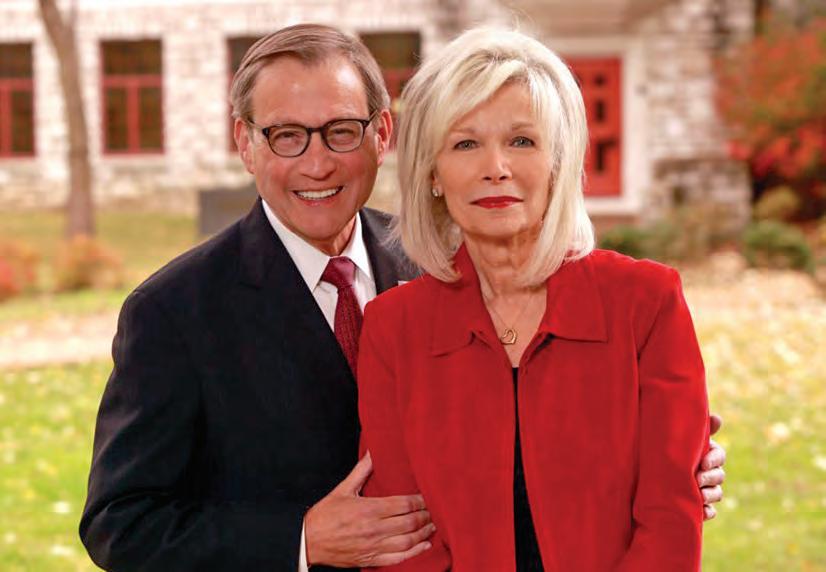
The
the law that was President Obama’s crowning legislative achievement.
In the St. Louis region, where Centene is headquartered in Clayton, his loss as a leader in business and philanthropy con-
tinues to be felt nearly two years after his passing. The St. Louis American Charitable Foundation is recognizing Neidorff’s past leadership (and its current absence) with an unprecedented
posthumous award at the 2024 Salute to Excellence in Business.
“Michael Neidorff was a tremendous
See NEIDORFF, page 7
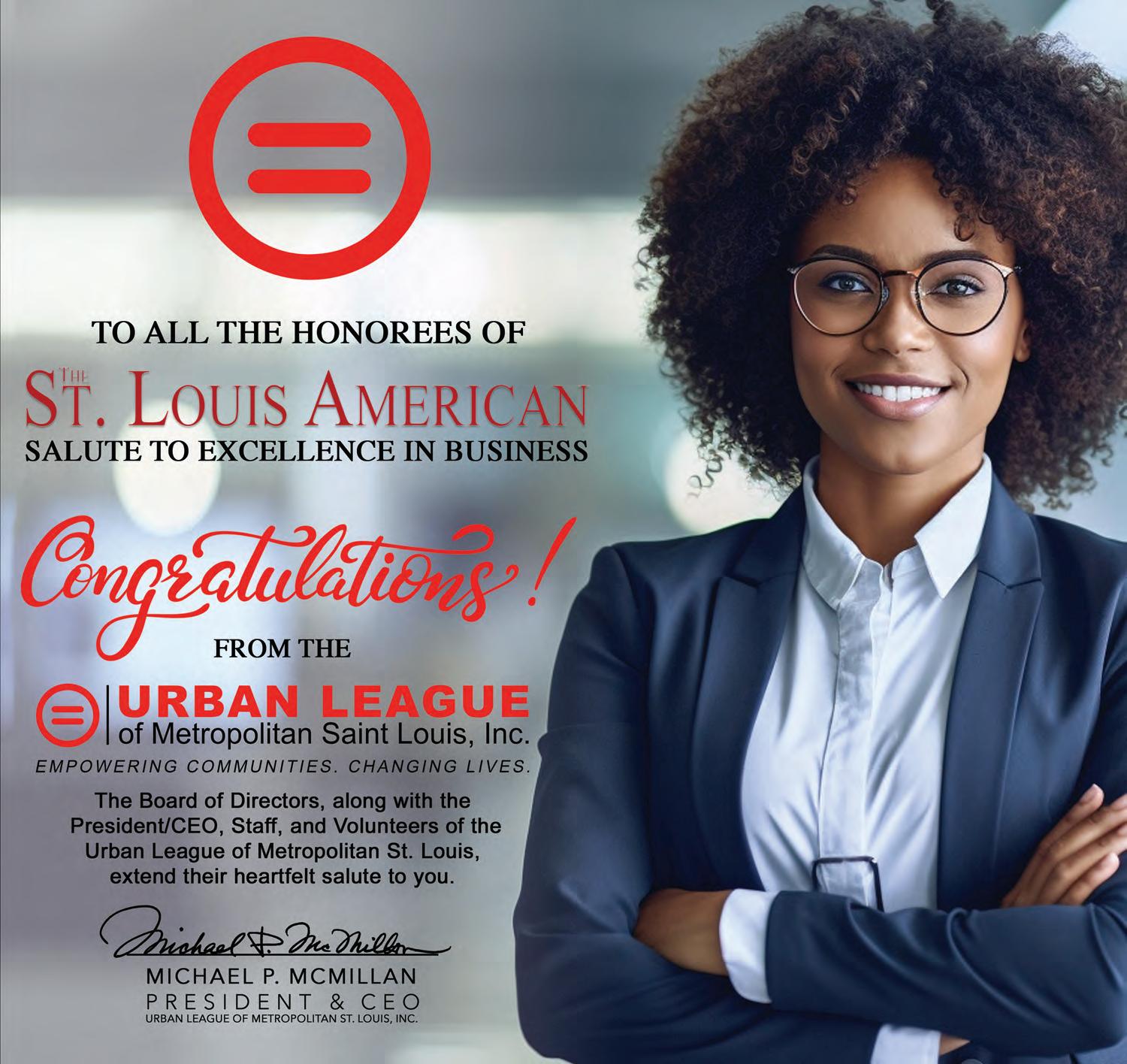

Michael McMillan, (right), president and CEO of the Urban League of Metropolitan St. Louis said, “Michael Neidorff was a tremendous leader when it came to diversity, equity and inclusion (DEI). He led by example in terms of having an extremely diverse senior leadership team at Centene.. Michael was also just as generous with his time and resources personally and professionally to causes that embody DEI.”
Continued from 13
leader when it came to diversity, equity and inclusion (DEI). He led by example in terms of having an extremely diverse senior leadership team at Centene, which is the largest publicly traded company in the state of Missouri. Michael was also just as generous with his time and resources personally and professionally to causes that embody DEI,” said Michael McMillan, president and CEO of the Urban League of Metropolitan St. Louis,
which enjoyed a close relationship with Neidorff and the Centene Foundation, the corporation’s philanthropic entity.
McMillan credited Neidorff, the Centene Foundation and the foundation’s president Keith Williamson with critical support for many Urban League of Metropolitan St. Louis initiatives: the final funding necessary to complete the Ferguson Community Empowerment Center; the funding to purchase the former Auto Zone that was burned down during the events in Ferguson to build the Urban League’s Senior Center and Apartments; title sponsorship of the National Urban League Convention in
St. Louis; funding for the renovation of the former HDC Headquarters to be transformed into an African American Business Hub and Public Safety Center; the initial funding to make a down payment on the purchase of the Urban League’s new regional headquarters and retail plaza behind it; and title sponsorship of the Urban League’s signature events.
Williamson worked with Neidorff before Centene had achieved a position to make that degree of philanthropic impact as the company’s general counsel, and he worked alongside Neidorff as he grew the corporation and its impact to scale.
“I remember talking with Michael shortly after I joined Centene in 2006. He was passionate in his belief that Centene and its executives should be actively involved in the community. Centene was small at that time but, even then, Michael dreamed big and acted boldly,” Williamson said.
“When he believed in a person or a project, he did not hesitate to generously commit his own funds and those of the company’s foundation. To an extraordinary extent, he was willing to courageously step up and act swiftly, whether that

continued from page 7
be in building a job-generating call center in Ferguson after Michael Brown or making an early, lead gift to enable the success of an Urban League capital campaign.”
Neidorff’s expansion of Centene put him on the shortest of short lists of the region’s business and philanthropic leaders, where for years he collaborated and strategized with David L. Steward, founder and chairman of Worldwide Technology. Neidorff also tabbed Steward to help guide Centene and himself on the company’s board. Along the way, they became more than colleagues.
“I was privileged, honored, and blessed to serve with Michael on the Centene board of directors for 18 years and even more so to call him my partner, my treasured friend, and my very dear brother. I smile as I fondly recall some of Michael’s last words to me: ‘You are my brother from another mother.’ Proverbs 18:24 tells us, ‘A man of many companions may come to ruin, but there is a friend who sticks closer than a brother.’ Michael was that friend to me,” Steward said.
“Everyone who knew him saw Michael as a pillar of strength and philanthropy in St. Louis and around the world. I will always remember his passion for serving ‘the least of these’ in our society. His servant leadership was a reflection of how God’s love conquers all! Thelma and I continue be inspired by all he accomplished in this world. We are grateful to continue in love and partnership with his wife, Noemi, and his son, Peter, as we perpetuate carrying out his inspirational vision of serving others.”
Neidorff did not let business commitments or community engagement crowd out his dedication to St. Louis’ many cultural treasures. He served on the board of the St. Louis Symphony Orchestra, as a trustee for Opera Theatre of St. Louis, and (going national, here) as treasurer of the Kennedy Center Board of Trustees in Washington, D.C.
“Michael Neidorff’s commitment to and leadership in philanthropy in St. Louis cannot be overstated. He was an incredible champion for St. Louis and for so many causes within our community, including our vibrant arts community. Michael was steadfast in his belief that the arts are a necessary component for the health and well-being of a city,” said Andrew Jorgensen, general director of Opera Theatre of St. Louis.
“Opera Theatre was incredibly fortunate to benefit not only from his generosity, but also his wisdom, insight, and encouragement as a board member, and I am personally fortunate to have counted him a friend and mentor. He believed in the power of the arts to move, change, and empower individuals and communities, and he demonstrated that in both word and deed. When I think on the impact he made on OTSL and the greater St. Louis arts community, I am grateful and inspired. May we all aspire to care about our community as much as he did!”
As a result of Neidorff’s leadership, St. Louis-based Centene is ranked #24 in the Fortune 500, #57 in the Fortune 500 Global list, and #7 on the 2019 Fortune Change the World list. Fortune ranked Centene as the #2 company nationally for diversity and inclusion.
“His example proved that DEI could lead to an incredibly profitable business model,” McMillan said of Neidorff.
“Michael was an incredible role model and mentor to many, including me,” said Steward. “He is certainly missed but his legacy will continue to positively affect many future generations.
His longtime colleague Williamson said, “In both business and philanthropy, Michael set high standards for himself and those around him. One of the signs in his office that exemplified his philosophy was a quote from Nelson Mandela, ‘It always seems impossible until it’s done.’”

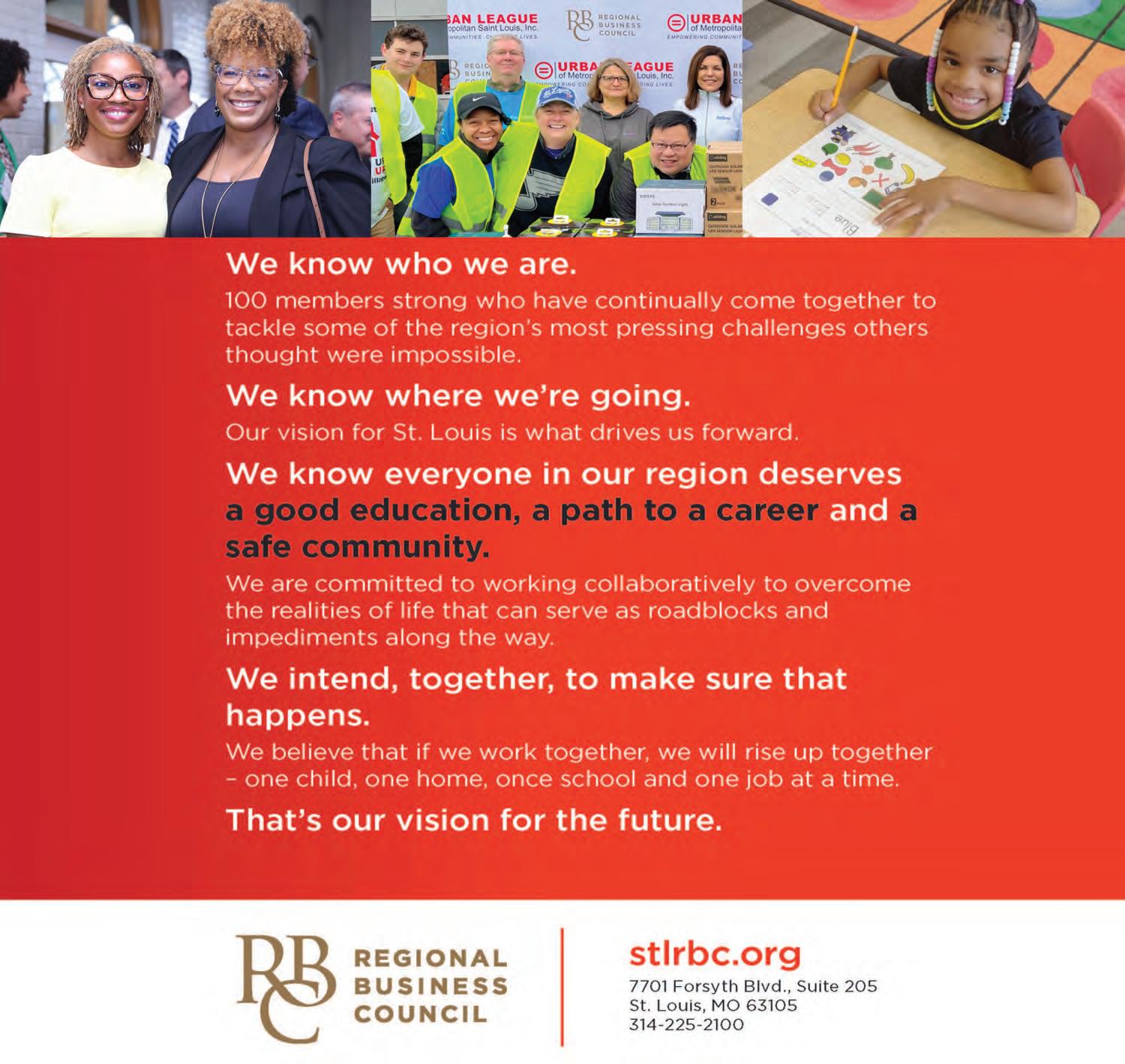
By Alvin A. Reid St. Louis American
Girls Inc. of St. Louis, under the leadership of President and CEO Cheryl Jones, was named the national organizations’ Outstanding Affiliate of the Year in the large budget category in 2020.
A year later, it was one of seven affiliates to share a $10 million grant by the Equality Can’t Wait Challenge, which is being directed toward its Project Accelerate program.

Yet Jones says she and her organization, which serves 9,000 girls annually through after school and summer programs, will not rest on its laurels.
“We also go into schools, and right now we have 72 school partners.
The work is just beginning,” Jones said emphatically.
“It’s not enough. We’ve got to keep going keep doing.”
Jones has been named the 2024 St. Louis American Charitable Foundation Non-Profit Executive of the Year, something she describes as “pinch yourself moment.”
She will be honored during the 22nd Salute to Excellence in Business Awards and Networking Luncheon at 11 a.m. Thursday February 22 at the Ritz-Carlton St. Louis.
Under the theme of “Expanding Inclusive Growth,” the event is co-sponsored by the Urban League of Metropolitan St. Louis and the Regional Business Council.
I grew up reading [the St. Louis American], and know it well,” she said.

“To be recognized by your own is such an honor.”
Of the girls involved with Girls Inc., many are from under-resourced, underserved areas. It is Jones’ mission to ensure that they “be strong, smart and bold with their life choices.”
If you’re in Girls Inc. you’re going to be involved in its STEM (science, technology, engineering, mathematics) program, which partners with University
of Missouri-St. Louis, Maryville University, Washington University, Fontbonne University, and Southern Illinois University Carbondale. There are also programs in creative arts, business, and other fields.
“Project Accelerate has been a remarkable collaboration that will change the career trajectory for young women across the country, and especially here in St. Louis,” Jones said.
Girls Inc. of St. Louis, under the leadership of Cheryl Jones, president and CEO, was named the national organizations’ Outstanding Affiliate of the Year in the large budget category in 2020. Jones has been named the 2024 St. Louis American Charitable Foundation Non-Profit Executive of the Year.
“This exciting, transformational award will enable future female workforce leaders to learn from top female industry executives whose mentorship will help pave career pathways for young women who have been previously excluded from leadership opportunities.
Jones’ honor was greeted by many St. Louis leaders with enthusiasm.
See JONES, page 13
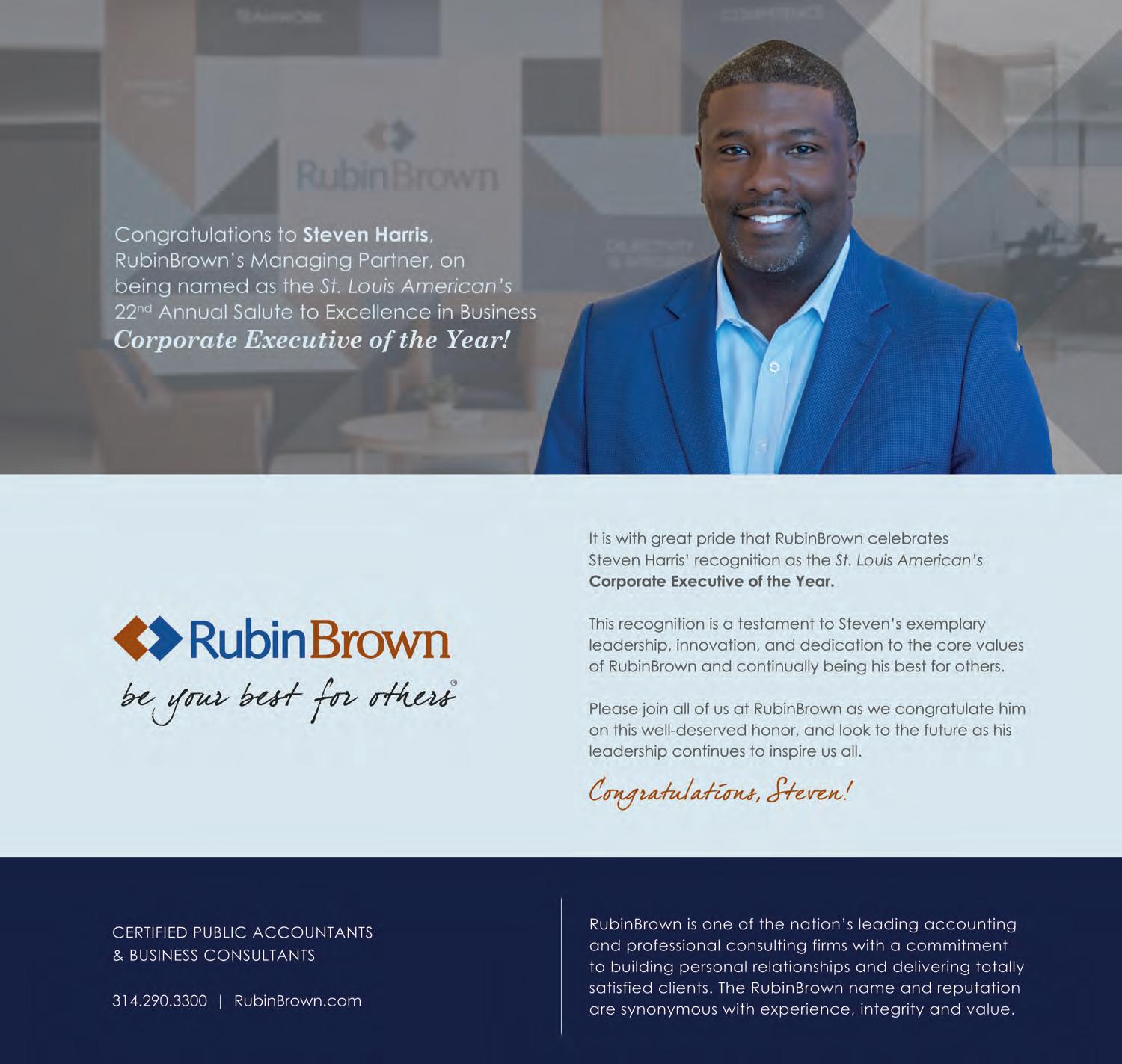
continued from page 11
“Great honor for a great leader,” Flint Fowler, Boys and Girls Clubs of St. Louis CEO wrote on Instagram.
Well wishes also came from Michael McMillan, Urban League president and CEO, Kelvin Adams, president and CEO of the St. Community Foundation, Maxine Clark, founder of Build-A-Bear Workshop and former CEO, and Valerie Patton, Greater St. Louis Inc. chief DEI office president.
St. Louis’ local Girls, Inc. affiliate offers activities and programming for young women interested in STEM, creative arts, business, and other fields. Its STEM program partners with University of Missouri-St. Louis, Maryville University, Washington University, Fontbonne
University, and Southern Illinois University Carbondale.
Jones said the organization’s hope is to provide exposure and a glimpse into college. During their fourth and fifth year, students are expected to land internships or externships.
“We meet girls where they are,” Jones said. “We ask them what they want to do, try to get behind them and support them.
Now in her 12th year at the Girls Inc. St. Louis helm, Jones is responsible for the strategic leadership of the organization and oversight. She manages staff, program administration and relationship with the National Girls Inc. organization, and is also responsible for building partnerships with schools, government and community organizations, foundation officers, corporate and individual donors.
Cheryl Jones is everywhere and does everything for Girls Inc., but she says, “there is always more to be done.”



By Sylvester Brown Jr.
Steven Harris, CPA, CGMA, a managing partner with one of the nation’s top 50 accounting and business consulting firms, RubinBrown LLP, has been named the St. Louis American Charitable Foundation 2024 Corporate Executive of the Year.
Harris, just the fourth managing partner in the firm’s 70-year history and RubinBrown’s first Black managing partner, will be honored during 22nd Annual Salute to Business Networking and Awards Luncheon on Thursday February 22 at the Ritz-Carlton St. Louis.

In his role, he works closely with the firm’s chairman, John F. Herber, Jr. while focusing on oversight of operations and representing the firm across all markets locally and nationwide.
Harris began his career with the Clayton-based accounting and professional consulting firm in 1999, after graduating from UMSL with a degree in accounting. He was initially hired as a staff accountant after interning with the firm through INROADS, a program that aims to place underserved youth in corporate and community leadership roles.
Harris’ professional ascension over the past 20 years has been steady and impressive. In 2010, the firm named him a partner in Entrepreneurial and Assurance Services. He became chairman

Steven Harris, CPA, CGMA, a managing partner with one of the nation’s top 50 accounting and business consulting firms, RubinBrown LLP, has been named the St. Louis American Charitable Foundation 2024 Corporate Executive of the Year.
of the board of the National Association of Black Accountants in 2016 before his promotion to managing partner in 2022.
After graduating from Normandy High School, Harris had several higher education choices. He had the opportunity to attend the University of Missouri–Columbia or the University of Michigan, but he decided to stay close to home and
attend the University of Missouri–St. Louis (UMSL).
In an interview with UMSL Daily in 2022, Harris credited his ascent to the top of his profession to life lessons he learned while working with his father, E.C. Haris, who owned a drapery installment business in north St. Louis County. referring to his father as his “first men-
tor and best friend” Harris recalled his father’s commitment to service.
“It really started with learning from him on how to treat people like people, build a great network, try to do a quality job and good things happen,” Harris told UMSL Daily. “I spent a lot of summers
See HARRIS, page 17


Over his extensive career, Steven Harris has been honored with many local and national awards, including The Outstanding Leadership in Advancing Diversity Award by the Missouri Society of CPAs.
continued from page 15
working with him. He’s gone now, so I wouldn’t trade any of that for the world.”
Initially, Harris said he intended to study engineering but accounting classes he took under Dave Ganz, then associate dean and director of undergraduate studies in UMSL’s College of Business Administration, he changed courses. Harris had a talent for the mathematics involved in engineering but was captivat-
ed by Ganz’s teaching methods.
“The way Dave would explain it, he would take real-life scenarios and just bring them to life,” Harris recounted to UMSL Daily. “You’re working on math, but you’re really working through a real-life scenario, which is really, really special.”
While pursuing his college degree, Harris worked full-time in catering and banquet set-up at the Marriott St. Louis Hilton Airport. While juggling work and school, Harris managed to excel and make the best out of his time at UMSL.
“I got everything I could out of those
years of my life. I did everything and had no regrets because that whole experience was great,” Harris told the university publication.
Over his extensive career, Harris has been honored with many local and national awards, including The Outstanding Leadership in Advancing Diversity Award by the Missouri Society of CPAs. He earned a bachelor’s degree in accounting from the University of Missouri - St. Louis and an Executive MBA from Washington University. He is also chair of the Regional Business Council’s Young Professionals Network, is on the
Chancellor’s Council at UMSL and is involved with the United Way of Greater St. Louis.
In the 2022 UMSL Daily interview, Harris described his recipe for career success:
“The most important thing I had to learn is you must have fun along the way. You have to put energy into everything that you do and own it,” Harris said. “Have fun and leave everything you touch better than the way you found it.”
Sylvester Brown Jr. is the Deaconess Foundation Community Advocacy Fellow.

By Chris King
For The St. Louis American
David Steward II, founder and chief executive officer of Polarity and an Academy Award-winning producer, is the St. Louis American Foundation’s 2024 Entrepreneur of the Year.

Steward founded Polarity in 2018. It encompasses a portfolio of content companies that produce graphic novels and comics, animated television, streaming and cinematic features, and gaming. In 2019, he launched Lion Forge Animation and produced Hair Love, which won the 2020 Academy Award for Best Animated Short. That company was rebranded to include a wider range of content as Lion Forge Entertainment in 2023. Steward founded his first entertainment company, The Lion Forge, LLC, to publish comic books in 2011.
Steward has maintained his initial mission – to publish comics and graphic novels with content for everyone, regardless of gender identity, ethnicity, or cultural background – and expanded it to cover more forms of content. Executing this mission has led him to build unusually diverse rosters of talent. Polarity and its subsidiaries employ more than 60 staff, 70% of them minorities and women. For his inclusive leadership, Steward was recognized in Variety’s 2022 Inclusion Impact Report, highlight-

ing the entertainment industry’s most impactful advocates for inclusivity. In another mainstream industry accolade, the Hollywood Reporter listed Steward among the 75 Most Powerful People in Kids Entertainment in 2023.
Steward’s namesake father – David Steward, founder and chair of World Wide Technology – received the St. Louis American Foundation’s inaugural Entrepreneur of the Year Award in 2000. The American asked Steward Sr. about his son following in his footsteps.
“My son honors his family legacy of
faith-filled entrepreneurship. I know his grandfather, Harold Steward, the original Steward entrepreneur, would be overcome with emotion at the work Dave II has accomplished. My wife, Thelma, and I are extremely proud of the groundbreaking work he has done in the animation and entertainment industries,” David Steward said.
“We know there is a bright future ahead for our son and his company as he continues to follow the faithful call for his life. He is using his entrepreneurial spirit and highlighting the importance of
David Steward II, founder and chief executive officer of Polarity and an Academy Award-winning producer, is the St. Louis American Foundation’s 2024 Entrepreneur of the Year.
diversity while touching many lives for the next generation and beyond.”
The American spoke to David Steward II about lessons he learned from his father, how he has grown a diverse portfolio of diverse entertainment companies, and why St. Louis is the place where he thinks his two young children can learn to follow their North Star.
The St. Louis American: Obviously, this honor is about you and your comSee STEWARD, page 20
Continued from page 19
panies, but there are two major figures I need to get out of the way first, and one is your father. I asked him about your winning this award, and he talked about your being, like him, a faith-filled entrepreneur. How does faith guide what you do with your companies?
David Steward II: I’ve learned a lot of lessons from my father by watching him start his businesses, how he grew them, how he worked with others, how we treated people, how he conducted business. The guiding tenants of how we have always operated are all biblically based. Sometimes it’s simple things in terms of treating people well at various levels in your organization, whether it’s the person helping clean up the building or the executive vice president. Everyone in our organizations is treated with respect and in a way we would like to be treated as well, and these things have been instilled in me by my father. We have to run our business and make a profit, but we’re not going to cut corners or treat someone badly just to make a profit.
The American: I see comparisons and contrasts between your businesses and your dad’s main business. There’s a shared sense of ambition, scope, and scale. You acquire businesses, you add businesses, you grow, and that’s what he’s always done. As a contrast, he was always selling things that everybody knew the world needed – technology and supply chain solutions – but you’re selling people things with a lot less obvious market value. What pushback and feedback did you get when you said of all the things you might do, this is what you want to do?
Steward: I’ve always had a passion for the visual arts. My dad told me early on, “If you do something you love, you’ll never work a day in your life.” He’s always instilled in us to follow our passions and our dreams. And what we’re doing, it’s a commodity product, and certainly there are other comic book and animation companies, but we are very different. There are no other companies focused on diverse content and working with diverse creators. We really blaze trails in working with diverse creators that have been very marginalized, Black artists and writers and other persons of

Steward II founded Polarity in 2018. It encompasses a portfolio of content companies that produce graphic novels and comics, animated television, streaming and cinematic features, and gaming.
color. With the types of stories that we’re putting together, coming from those diverse creatives’ point of view, we’re doing something that a lot of companies have really leaned on us for, whether it’s HBO or Nickelodeon. We’re helping them find those diverse creatives’ work and these stories.
The American: That brings us to the other major looming figure who is not you or your companies, and that’s the 2018 film Black Panther. I know that was a major studio production and not like what you do in that sense, but when that
years of marginalization of Black creators, executives, etc., and trying to diversify content. Then, for us, there was producing and being a part of Hair Love and the success of that. So, you had this environmental shift, but also our own success trajectory that we created with Hair Love helped to propel us into the spotlight.
The American: Looking at your track record, “diversity” for you is not a code word for “Black.” Your staff and content are genuinely diverse. What’s your diversity strategy?
Steward: It’s not one that’s exactly written on paper. Our strategy is our mission, which is diverse stories authentically told. To tell diverse stories is very important for us – and to include people who look like the people we’re portraying on screen. So, if I’m going to do a Native American story about a Native American group, then I’m going to have people representing that Native American group on that creative team in meaningful positions. Because of that mission, we naturally end up having a diverse staff. Our team is naturally grown as naturally diverse because of the types of things that we’re doing in the marketplace.
The American: Is there any way you monitor your content diversity?
happened, I thought, “Dave Steward saw this potential before anybody else.” The way that Black Panther happened, did it open doors for you?
Steward: That was one of three things that happened all around the same time. Black Panther was important in that it showed executives in Hollywood that Black content from Black creators is important and it’s very lucrative, as well. Another thing, sadly, was George Floyd and the Black Lives Matter movement. Suddenly, you had all these companies focus on trying to clean up their act for
Steward: It starts with looking at the marketplace in general. Over the last few years, if you look at kid’s content, there have been a number of green-lit and produced shows that have Black girls. But there’s not a lot of shows that have Black Boy leads. So, there needs to be shows featuring more Black boys. We need to find shows featuring Hispanic boy leads. We’re seeing holes, then we produce and look for content that can fill those holes. Content buyers tend to move like a herd, almost. Where they see one opportunity, they all tend to shift towards that particular direction, which leaves holes in other areas. So, we make sure that there’s representation across the board.
The American: You started Lion Forge in St. Louis. Now you must have your tentacles on both coasts. Are you still a St. Louis resident?
Steward: I’m here in St. Louis. I was born and raised here. I want my kids to grow up here, and they’re firmly involved in the school system here. I just take monthly trips to L.A. to do what I need to do.


By American staff
The journey of Michael Kennedy Sr., retired chairman and CEO of KAI Design & Build, to becoming the St. Louis American Foundation’s 2024 Lifetime Achiever in Business began with what Kennedy remembers as a distasteful situation in the early days of minority inclusion.
“In the late 1970s, minority participation was being forced on publicly funded developments. In the design industry, majority-owned architectural firms were required to team with a minority-owned firm for 10% of the work. Most of the time, the minority-owned firm did not have the experience to do the 10%,” Kennedy told The American
“So, the majority-owned firms would often give the minority-owned firm 10% of their fee, but they would explain to their clients that their fee would need to be 10% more than usual, because they were going to have to do the work for the minority firm. That approach was very distasteful for both the architect and his client.”
Out of that distaste emerged what would become a significant new local, regional and national player in the designbuild markets.
“Their distaste for that practice presented an opportunity for me to provide a minority-owned firm that could actually do the works,” Kennedy told The American. “I accomplished creating that firm and becoming recognized for our excellent services and became the first choice of both the majority-owned firms and their clients.”
Kennedy founded his firm in St.
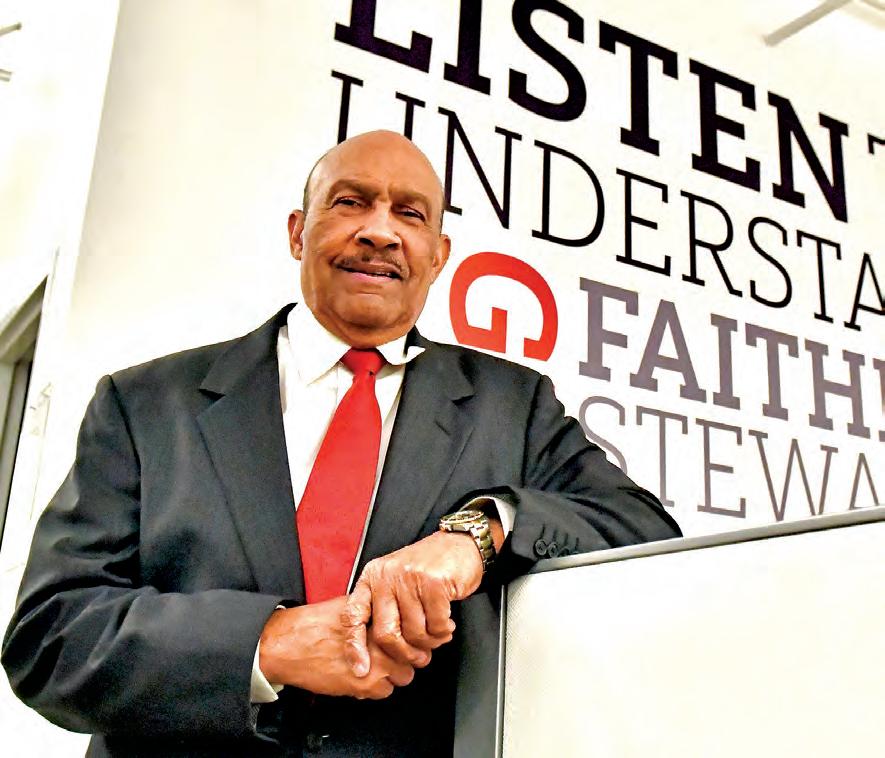
Louis as Kennedy Associates, Inc. in 1980. Though his first success as an entrepreneur, it was not his first attempt.
“I always dreamed of having my own business, but never understood how that could happen,” Kennedy said. “I did, in fact, work for several firms before starting my first attempt in 1975, which failed after two years, but I learned a lot before founding KAI.”
Kennedy had wanted to be an architect since boyhood. He became fascinated watching homes being built in his
Richmond Heights neighborhood that were designed by African-American architect Charles Flemming. Though in 1963 a high school guidance counselor advised him that Washington University’s school of architecture would not enroll a Black student, the university reached out to Kennedy in 1969 as the Civil Rights Movement gained steam and invited him to enter the School of Architecture as a graduate student. He soon became the first African-American architect registered in the State of Missouri.
Michael Kennedy Sr., the retired chair and CEO of KAI Design & Build, is the St. Louis American Foundation’s 2024 Lifetime Achiever in Business.
Though his local roots are strong, Kennedy’s business vision was wider than local from the beginning. He soon opened offices in Dallas and Fort Worth, Texas. (Dallas remains one of Kennedy’s favorite travel destinations.) KAI now employs a diverse team of 135 architects, engineers, interior designers, builders and support staff at its headquarters in St. Louis; offices in Dallas-Fort Worth, Kansas City, and Atlanta; and additional project offices
See KENNEDY, page 24
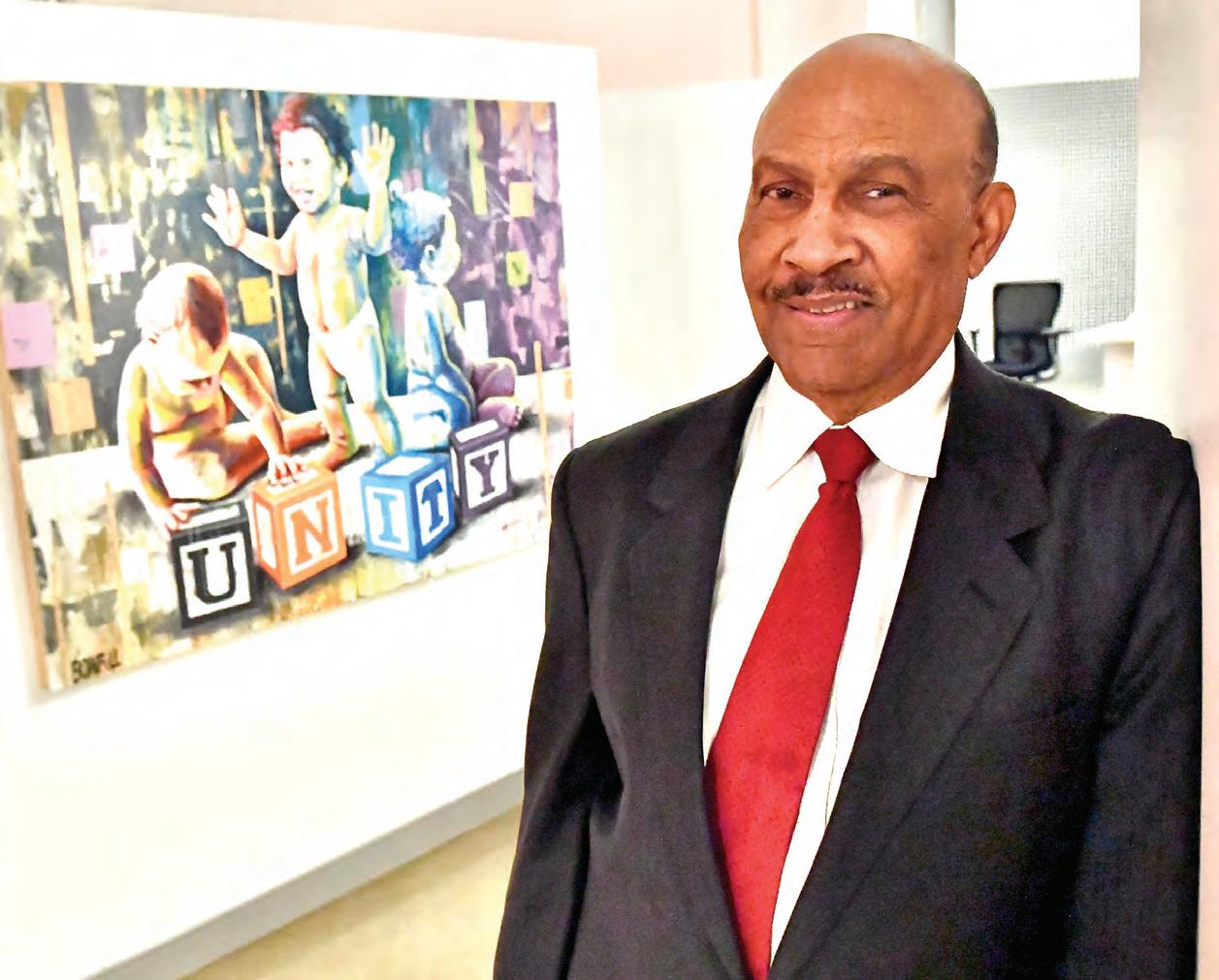
continued from page 23
throughout the U.S. KAI’s projects in other states include the Martin Luther King, Jr. Recreation and Aquatic Center in Atlanta; DFW International Airport, Dallas Area Rapid Transit and South Oak Cliff High School in Dallas; Reby Cary Youth Library in Fort Worth; and VIA Metropolitan Transit Brooks City Base and San Antonio Promise Zone in San Antonio, Texas.
However, its largest footprint remains here at home. Local buildings to KAI’s credit include the Millennium Center at the University of Missouri–St. Louis, The Deaconess Center for Child WellBeing, Boys & Girls Club of Greater St. Louis Teen Center of Excellence, St. Louis Community College Center for Nursing & Health Sciences, Lucas Crossing Elementary in Normandy, Gateway Middle School for Science and Technology, Clyde C. Miller Career Academy, Harris-Stowe’s William L. Clay Early Childhood Center, the St. Louis Justice Center, and affordable housing units in Old North St. Louis.
KAI’s trademark is high, glass-paned roofs that invite in ample natural light.
One of Kennedy’s favorite designs is the “spinal cord” of the Career Academy. It’s a three-story atrium space that looks like a prism of window panes from the outside. The peak of the prism acts as a spine that connects the gymnasium, cafeteria and offices of administration, filling them all with fresh light and life, Kennedy said.
Many of KAI’s projects have served an important public service. KAI got its first major national recognition, a National Endowment for the Arts award, after designing the 21 Metrolink stations in St. Louis.
“We’ve done so much in this community, and there is still a lot in the community to improve, so we hope to be working on it for a long time,” Kennedy told The American – back in 2010. That was when Kennedy received his first business award from the St. Louis American Foundation, the 2010 Entrepreneur of the Year Award.
By then, Kennedy had been grooming his successor – his oldest son, Michael B. Kennedy – for a decade. He recognizes that he owes some of his lifetime achievement to his son and successor.
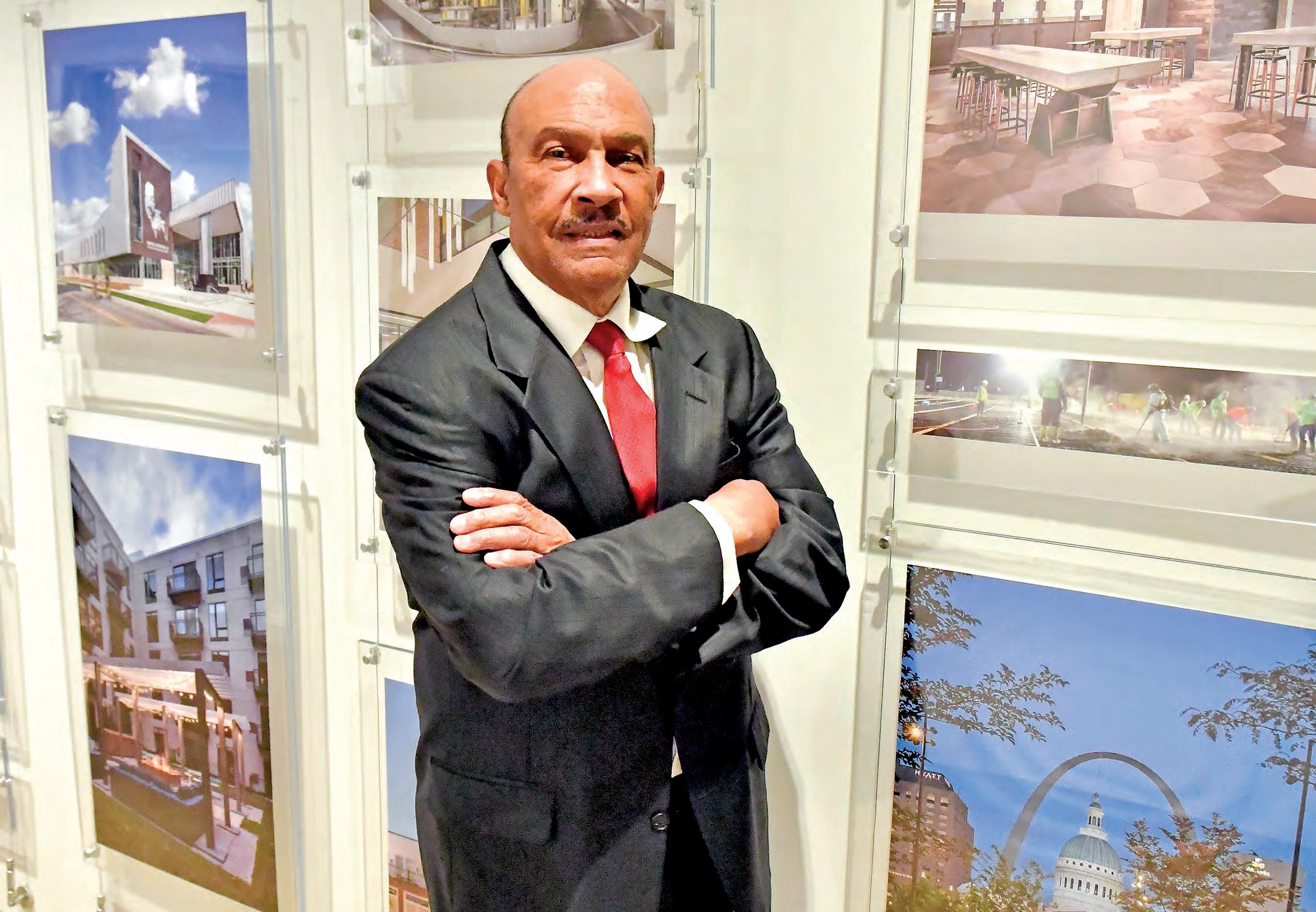
continued from page 24
“The key to KAI’s future is the perfect timing of Michael’s joining the firm in spring of 2000,” Kennedy said. “I had started a small firm and carefully led and grew it by my bootstraps and much prayer to just over 100 employees. Michael was trained to manage a large corporation,
and he has added the programs and procedures over the years that now guide KAI Enterprises.”
In 2004, Kennedy Sr. rebranded Kennedy Associates, Inc. into KAI Design & Build. Four years later, his son became KAI’s president. Kennedy Sr. retired in 2017. In 2019, his son restructured KAI Design & Build into parent company KAI Enterprises with four new subsidiaries – KAI Design, KAI Engineering, KAI Build and KAI
360 Construction Services. That same year, Michael B. Kennedy followed in his father’s footsteps again when he received the St. Louis American Foundation’s 2019 Entrepreneur of the Year Award.
“I am particularly pleased to have been selected by the Salute to Excellence in Business planners because The American has over the years been a supporter of KAI,” Kennedy said of his latest and culminating accolade. “One of my strongest driving forces always was to
be recognized as an example of excellence as a representative of all African Americans.”
What advice would he offer to young minority professionals looking to enter the design-build field?
“It is extremely important that they build a strong foundation for any career and then build their experience completing one step at a time,” Kennedy said. “By the time they get to step number 10, steps 10 to 100 will fall like dominoes.”
